Nonturismo is a collective process of rewriting the territory, a tourist guide with community-driven stops and itineraries, and an editorial series published by Ediciclo.
Why Nonturismo? On one hand, there are places in Italy undergoing transformation, either due to their remote locations or the overwhelming influx of mass tourism. On the other hand, there are those who yearn to immerse themselves in the land they’re exploring, people who see travel as more than just a pleasure, but a chance to connect.
Nontourism is a philosophy, a way of understanding the encounter between a community and those who come from outside. Nontourists seek an intimate and authentic relationship with a territory, and the community that hosts them offers paths open to the deviations of the soul, designed after a journey of self-identity reshaping.
Empowering places with community editorial teams
The tool for this collective process is the community editorial board, where artists, historians, economists, sociologists, botanists, hold short residencies with the community, helping them to reappropriate a common memory heritage, to investigate their present and build future imaginaries.
The editorial process consists of a series of meetings coordinated by a grass-rooted partner, in which inhabitants and incursors produce a multi-voiced storytelling, made of words and images, far from the idea of a single author.
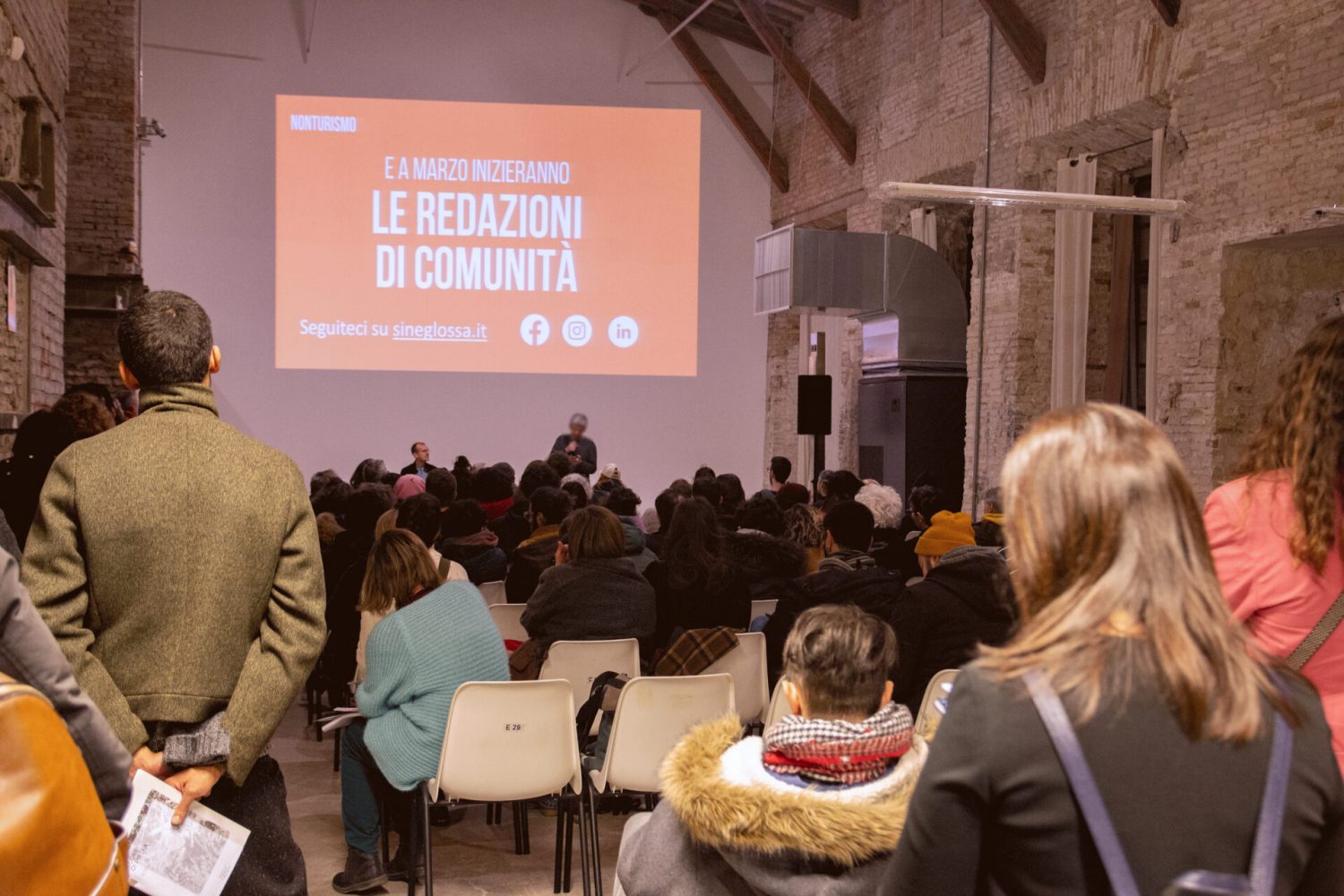
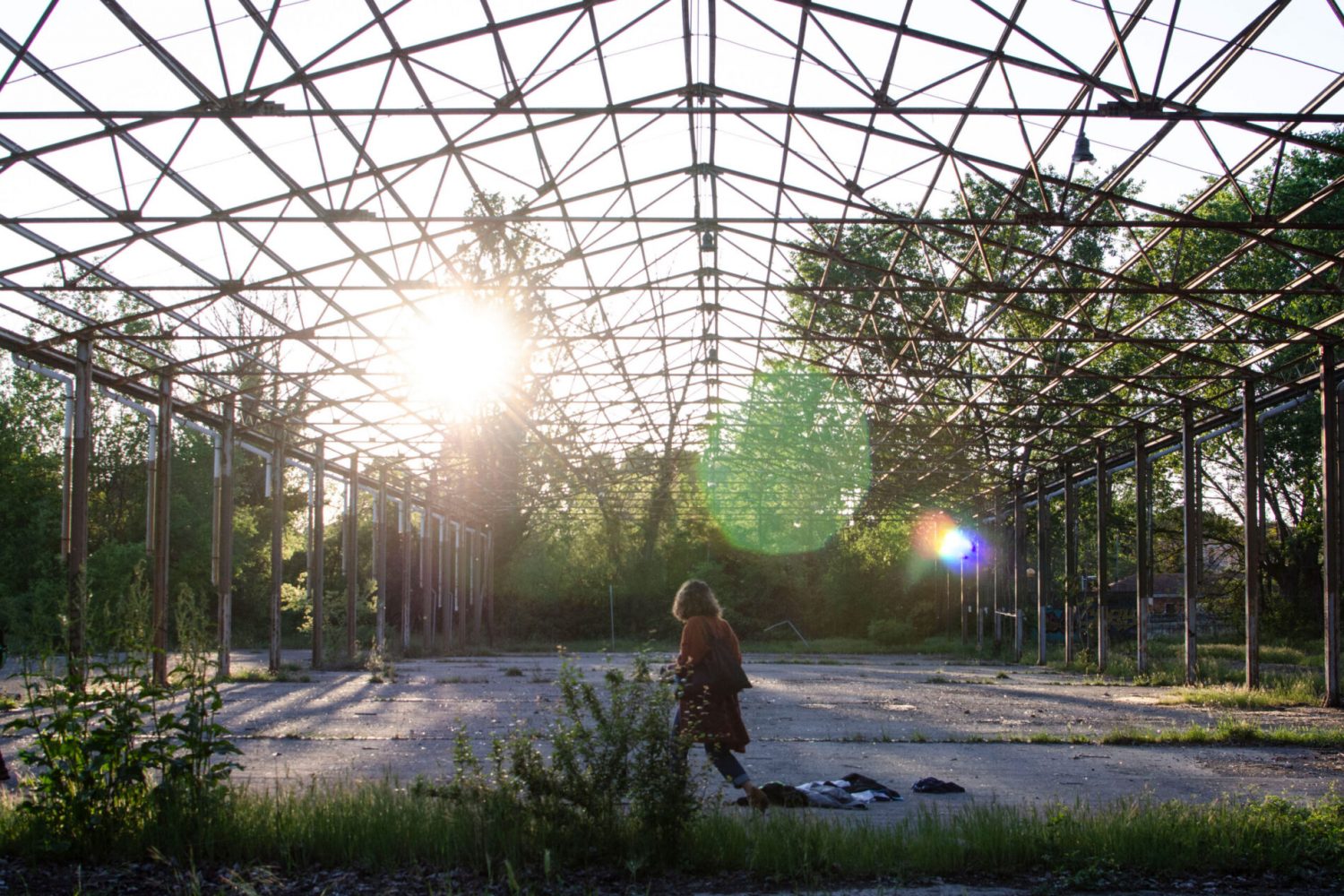

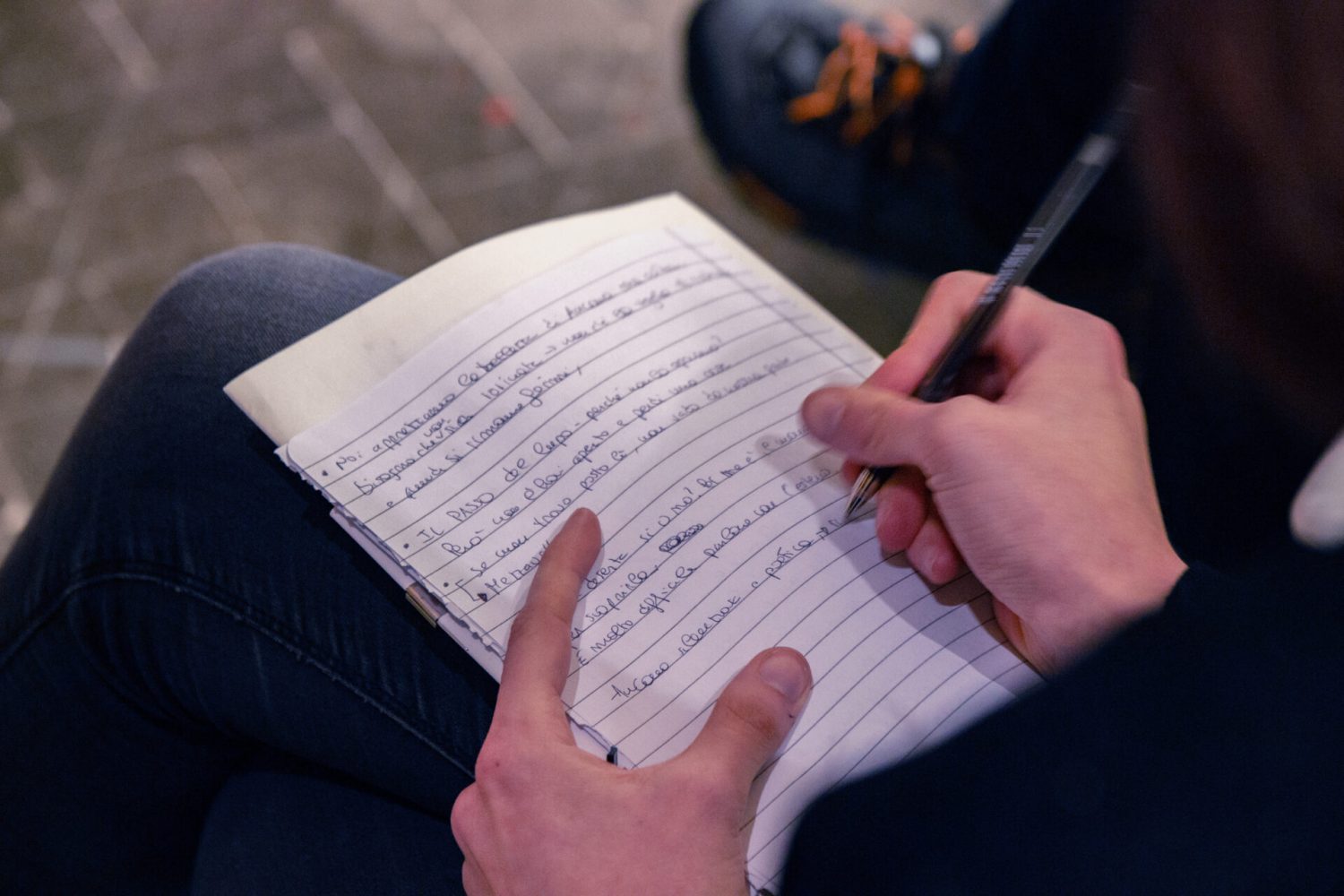
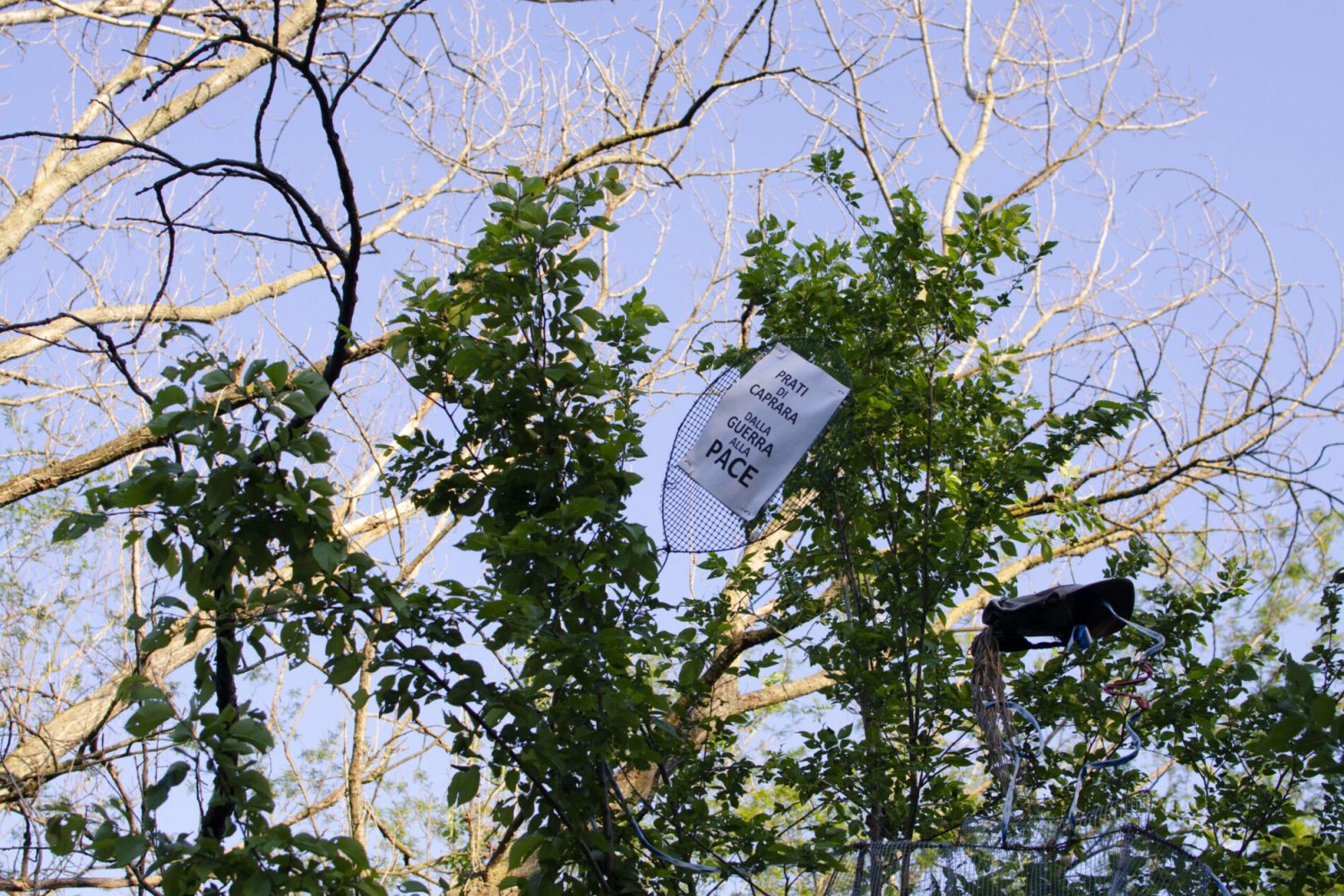
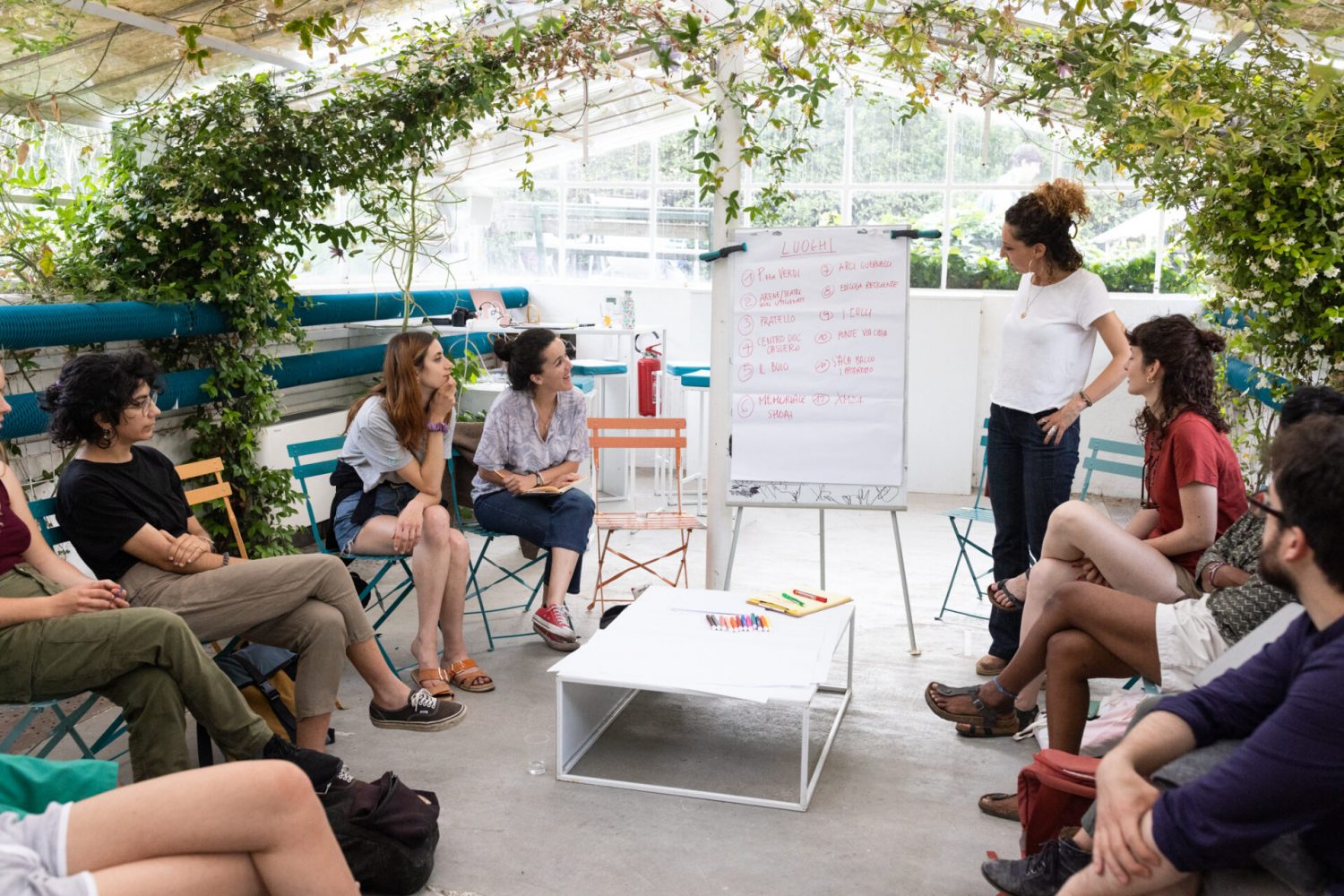
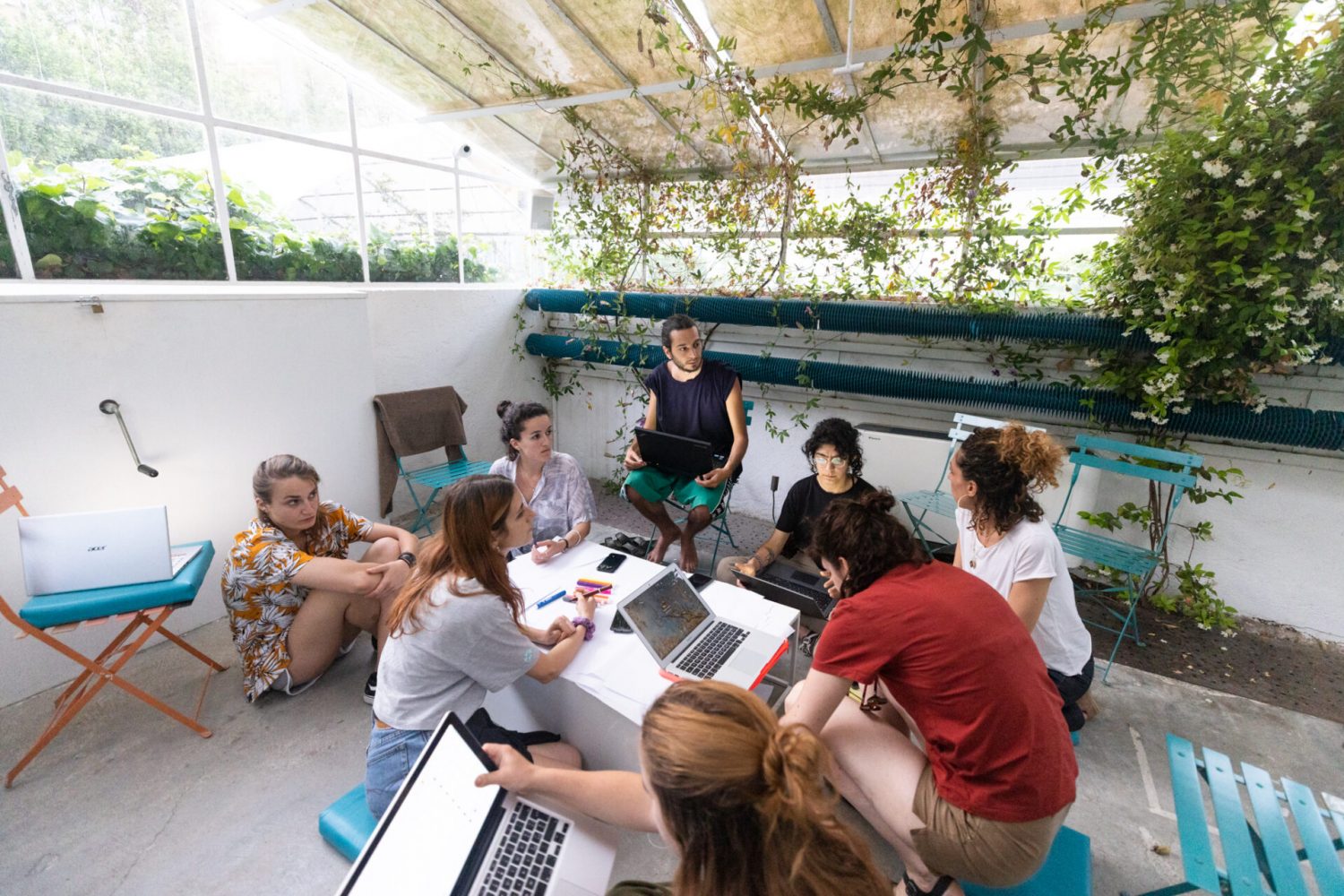
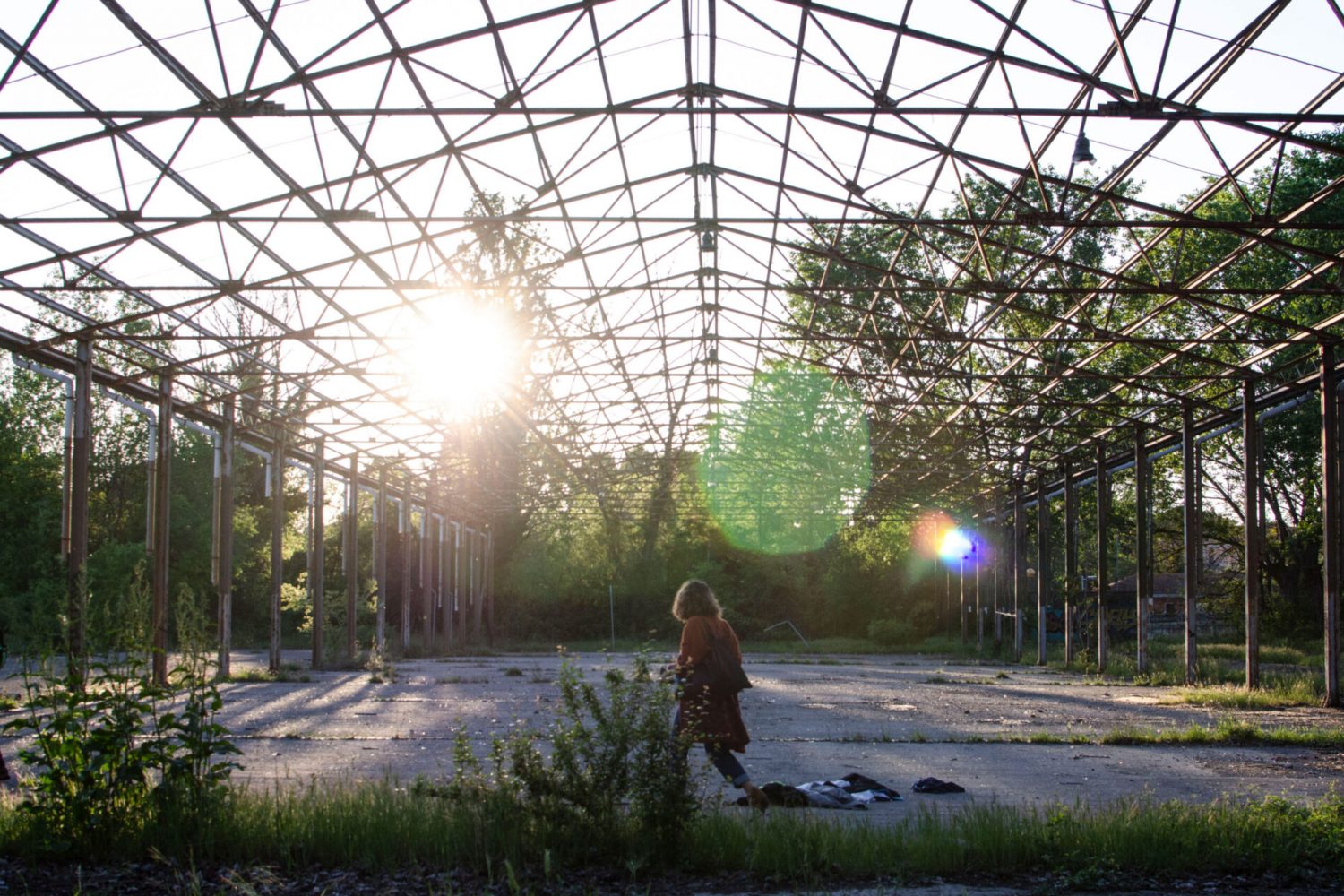
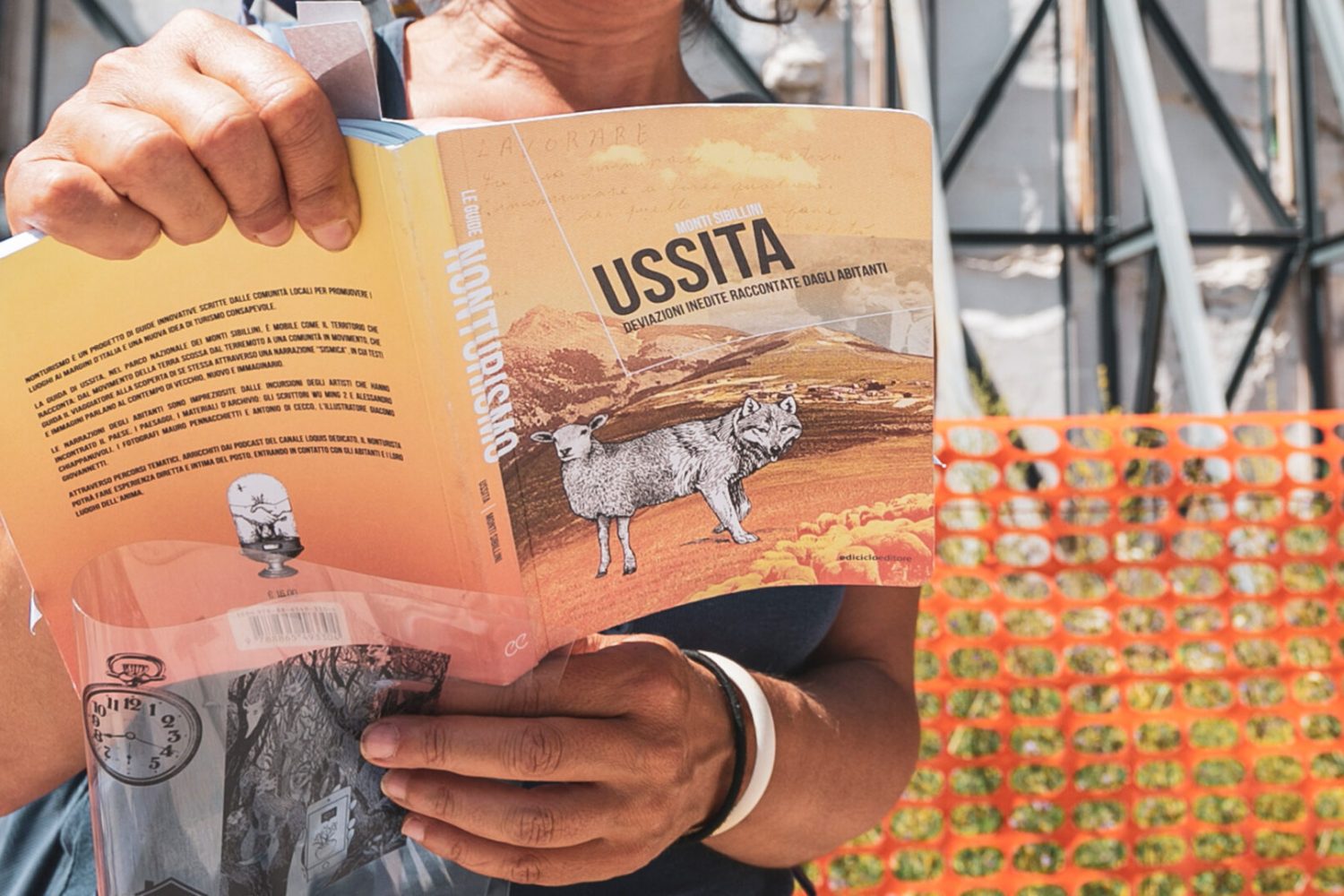
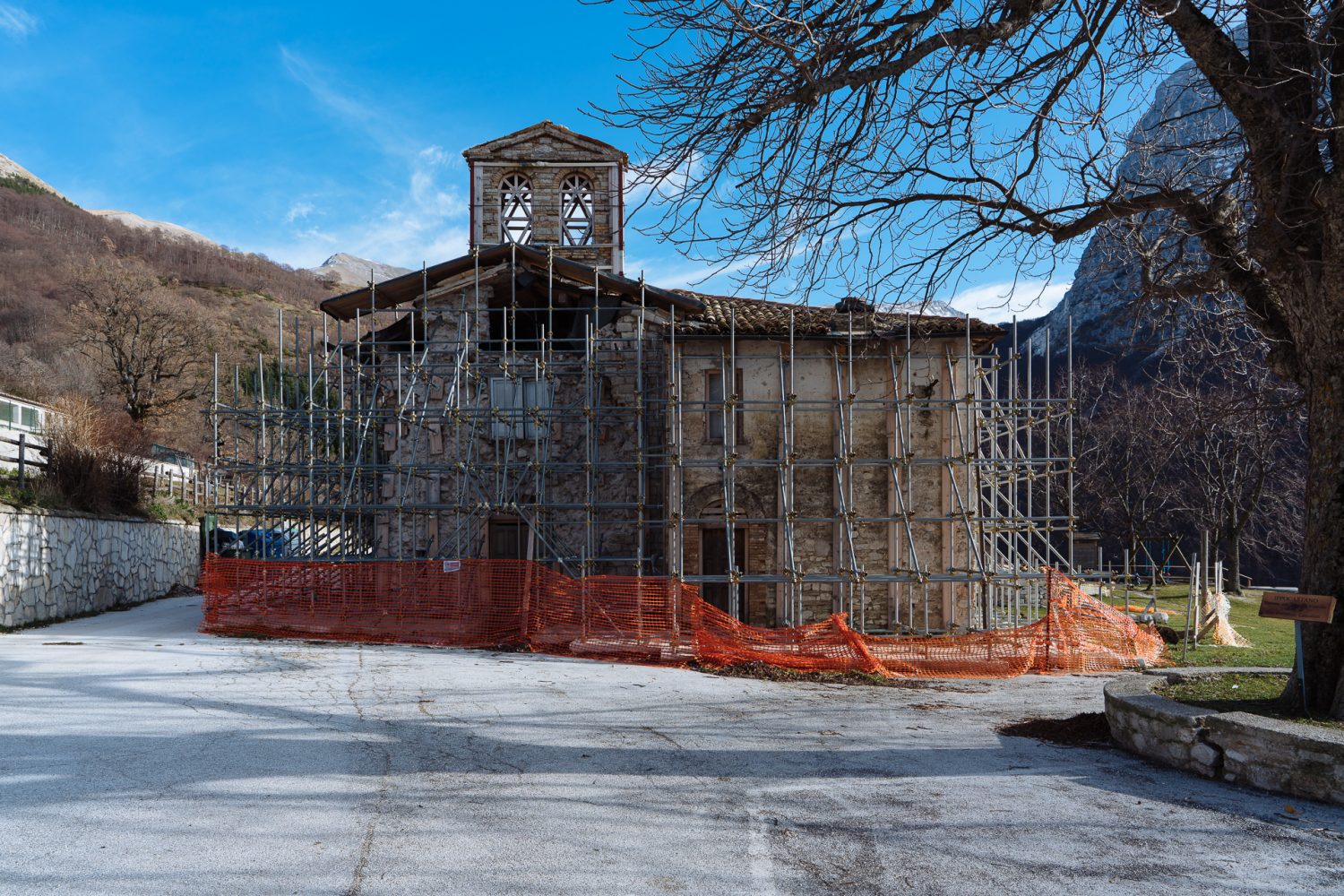
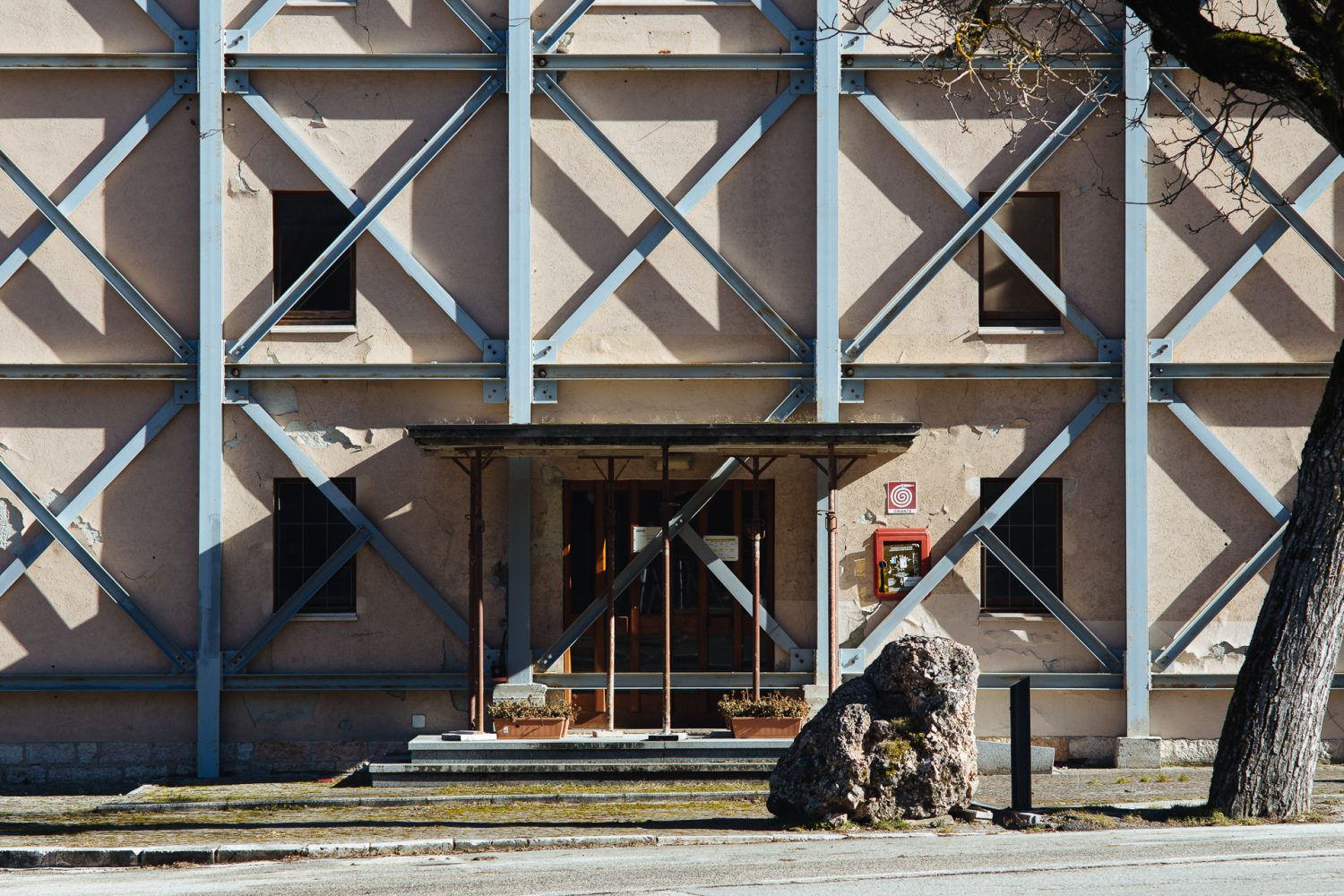
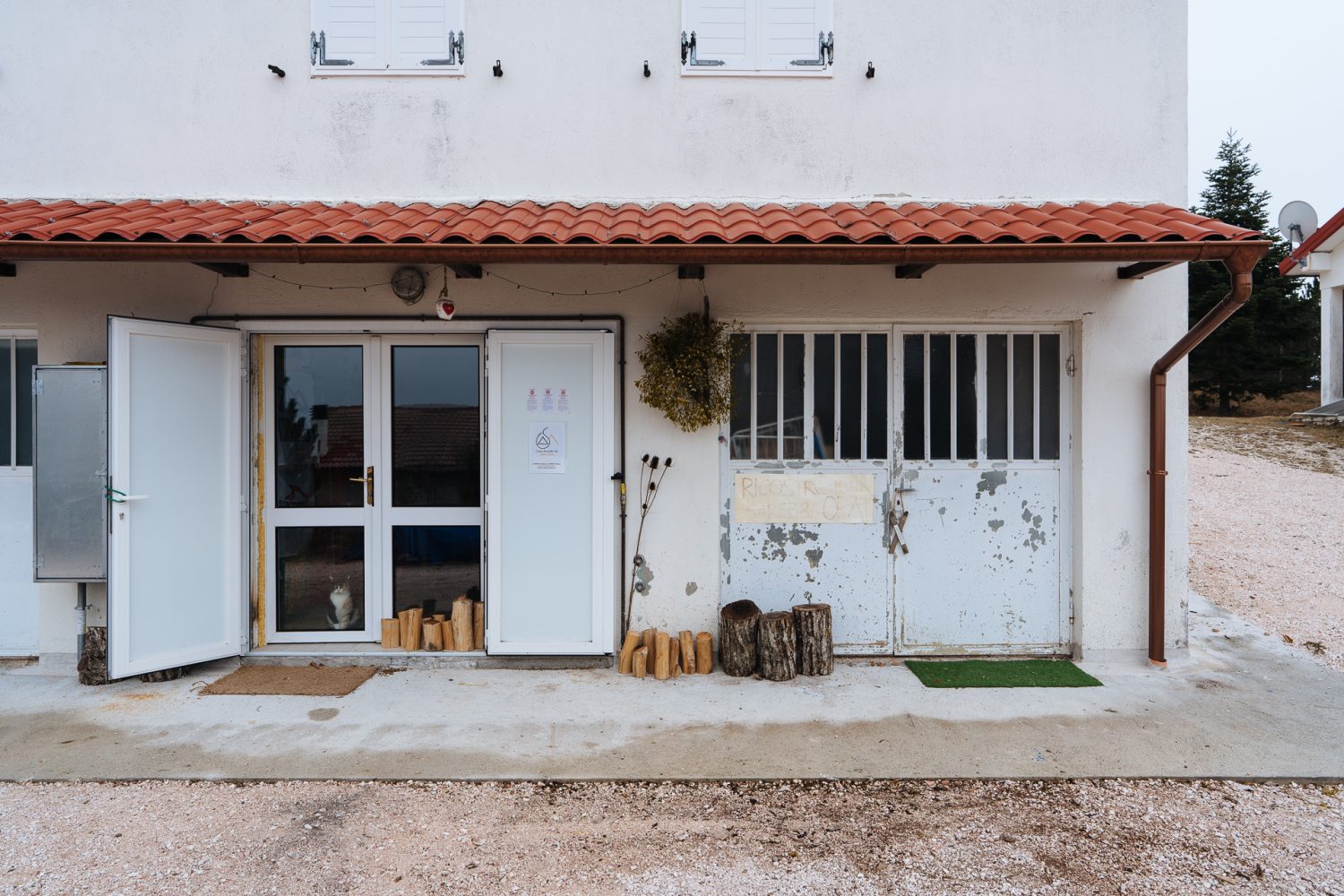
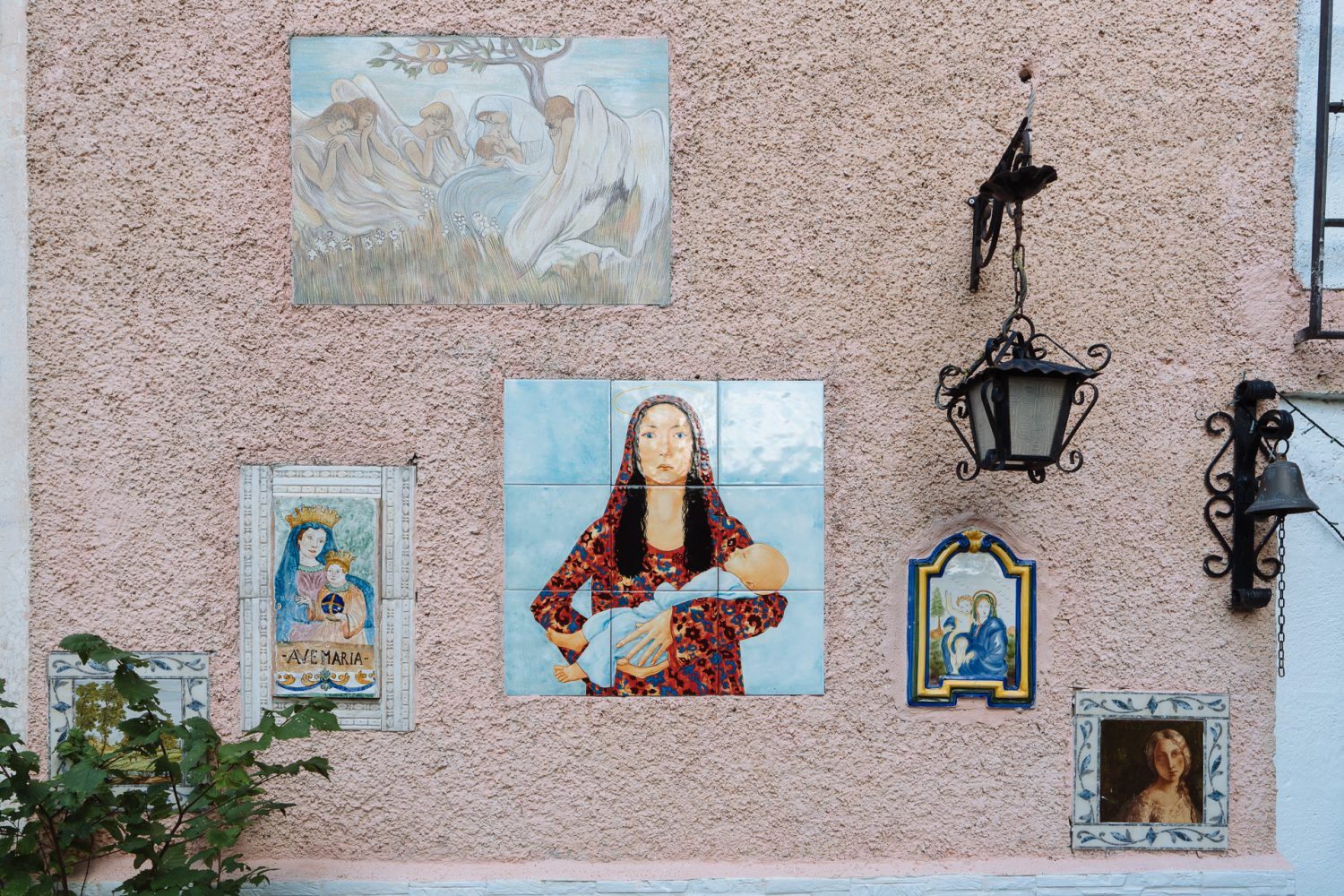
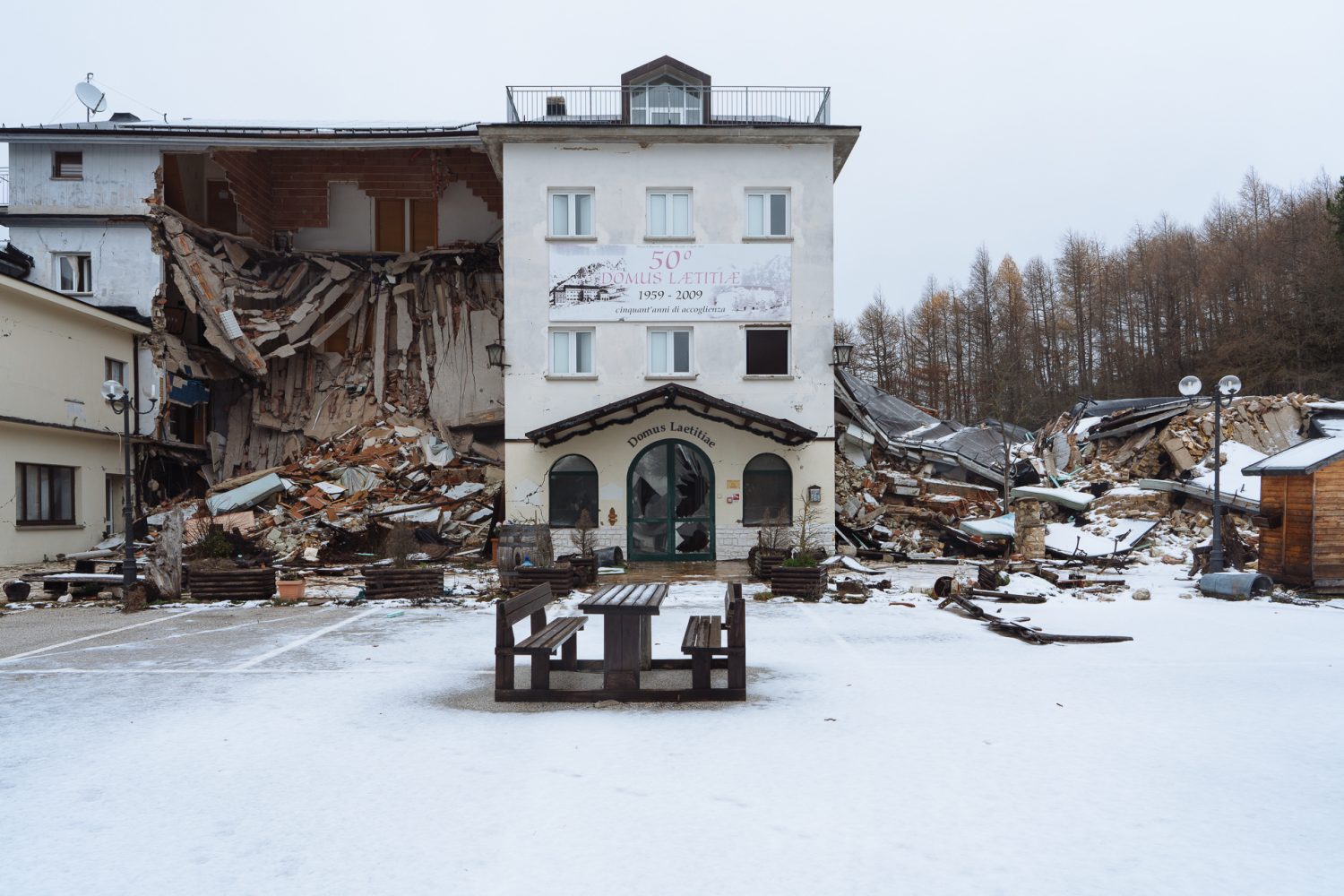
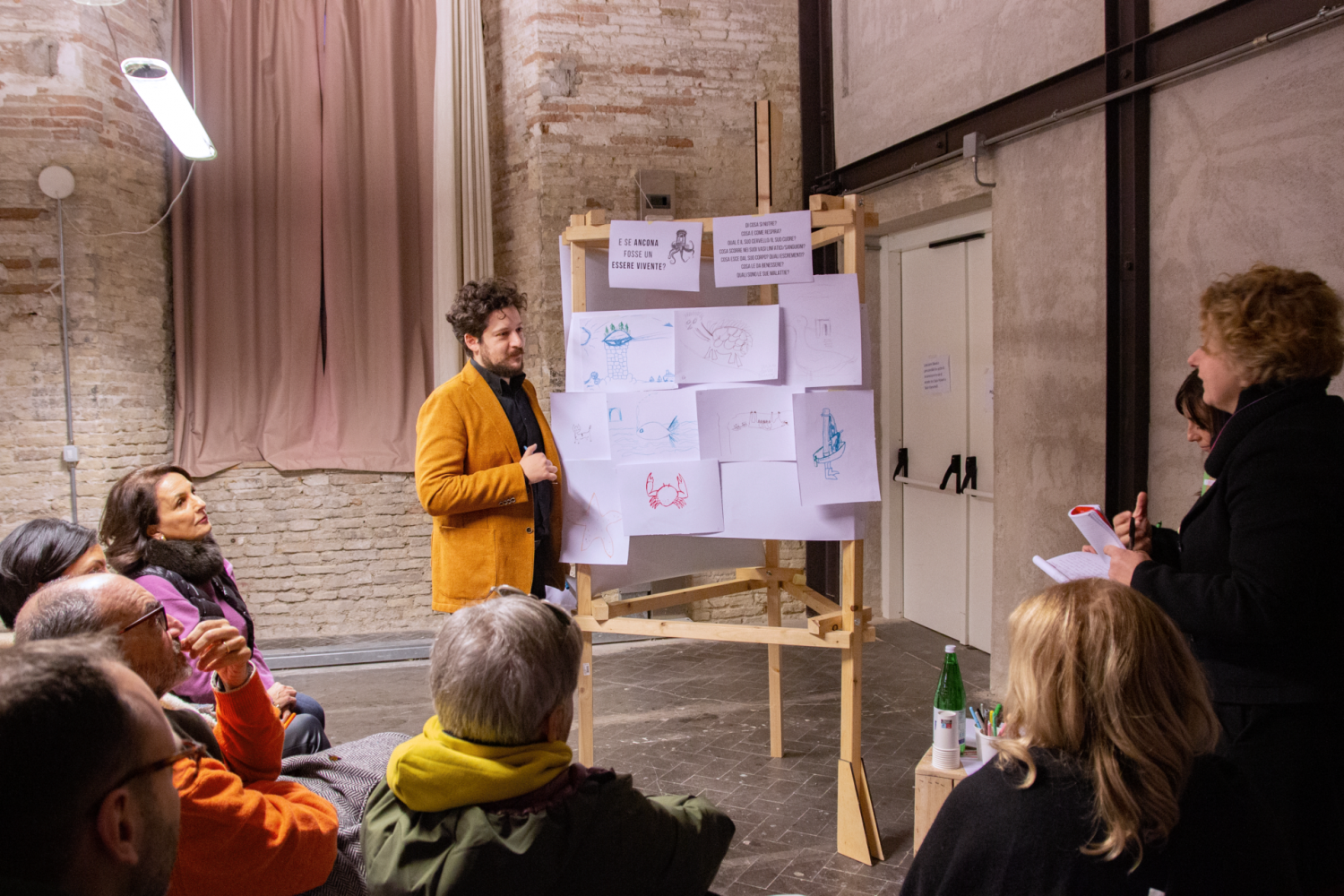


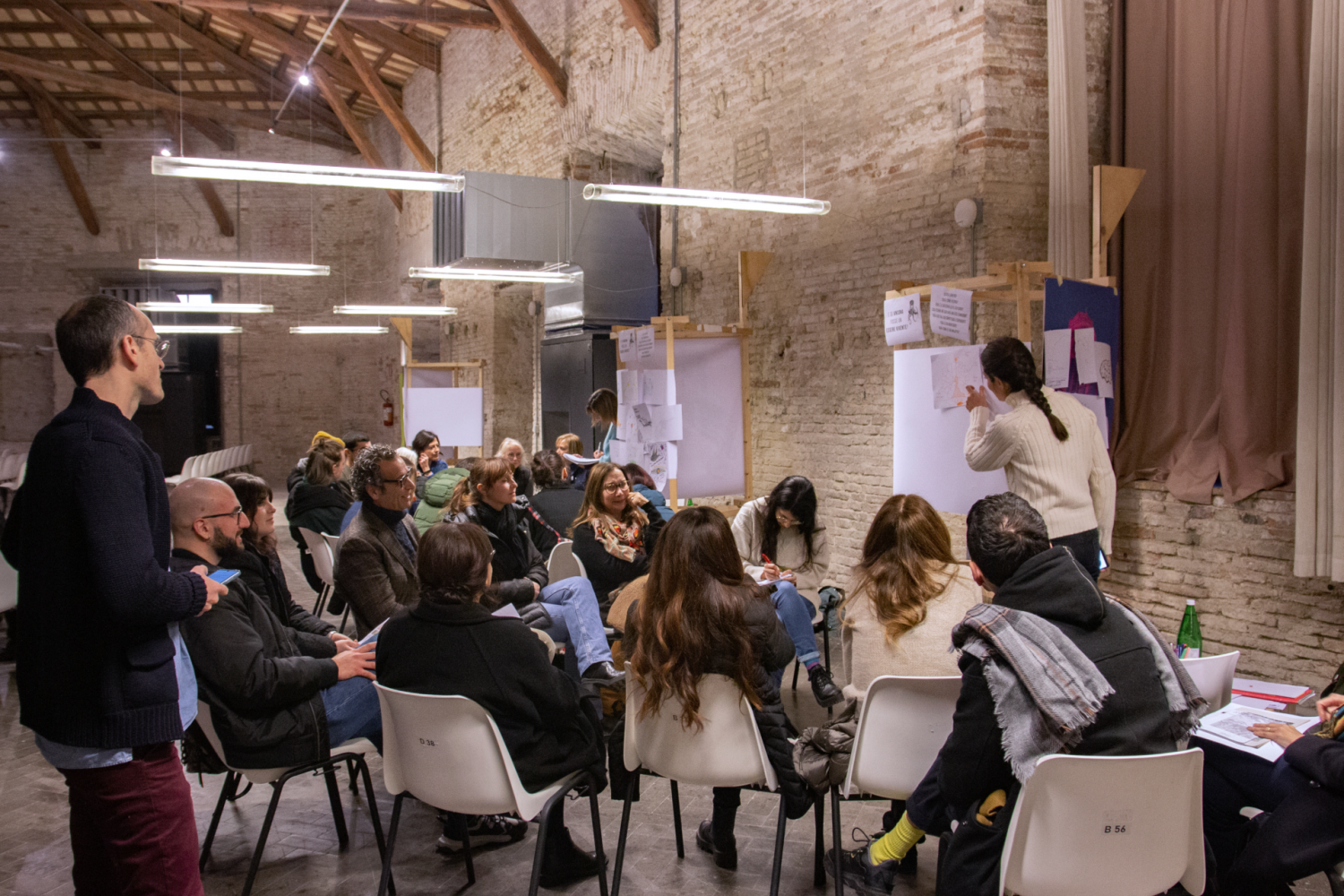
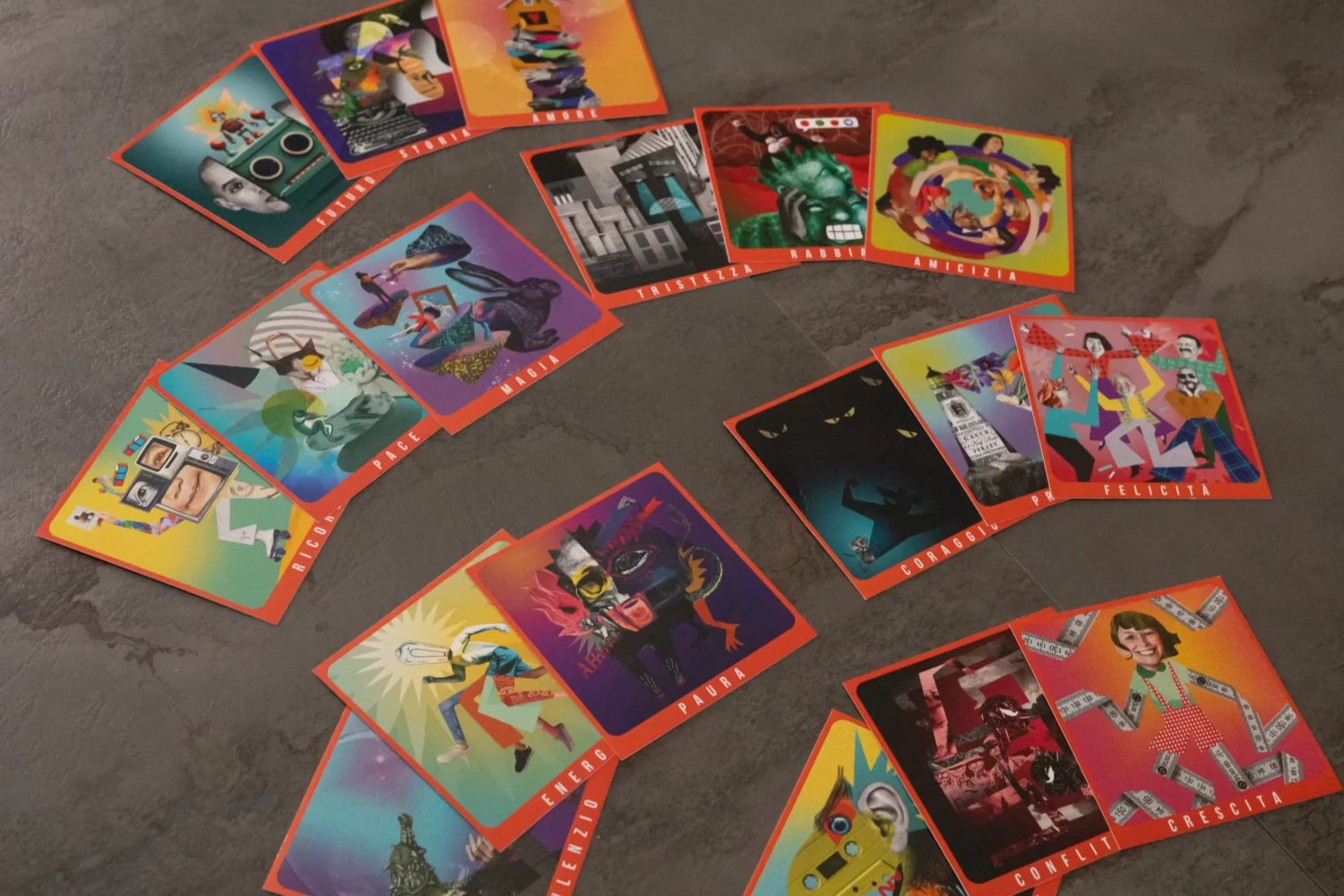
The three required ingredients of a non-tourist guide
It is not possible to know what a nontourist guide will look like from the beginning. Its form and content are defined as it goes along, according to the spirit of the place. However, every guidebook cannot lack some basic elements, which define its backbone:
GENIUS LOCI: Historical, traditional, folkloric, as well as naturalistic elements that have contributed to the identity of the place.
EMERGENCIES: What is on the surface, coming to the surface – positively and negatively.
VISIONS: More or less utopian projections of what the area will be like fifty years from now.
Ussita. Sibillini Mountains Nontourism Guide
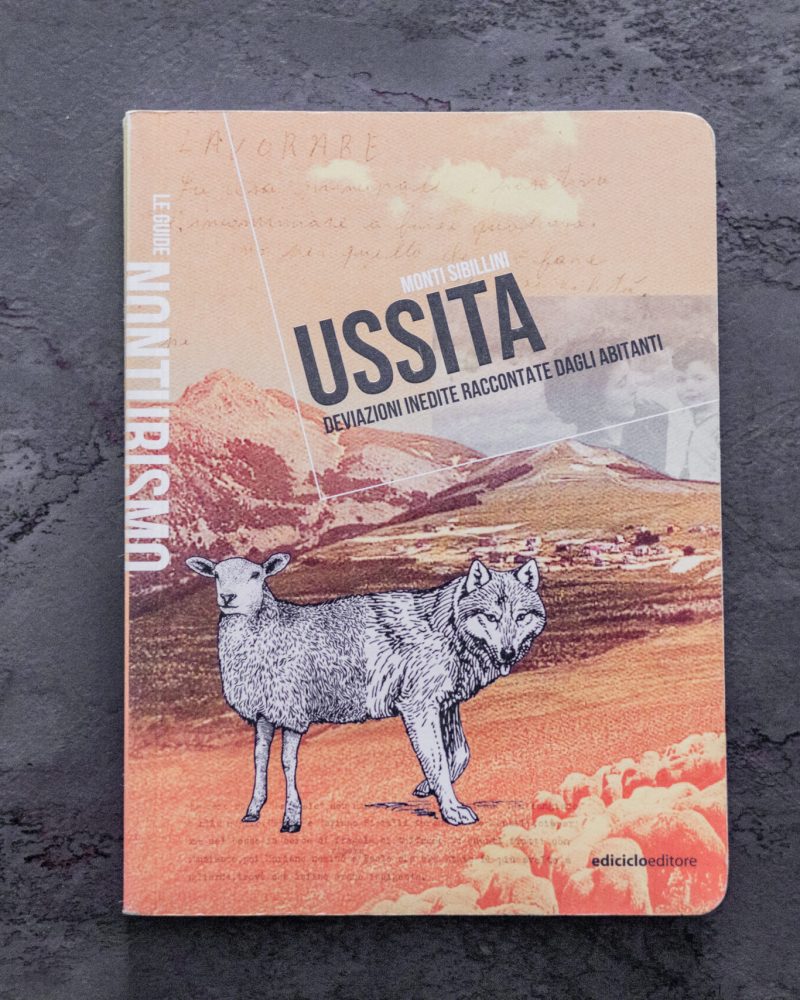
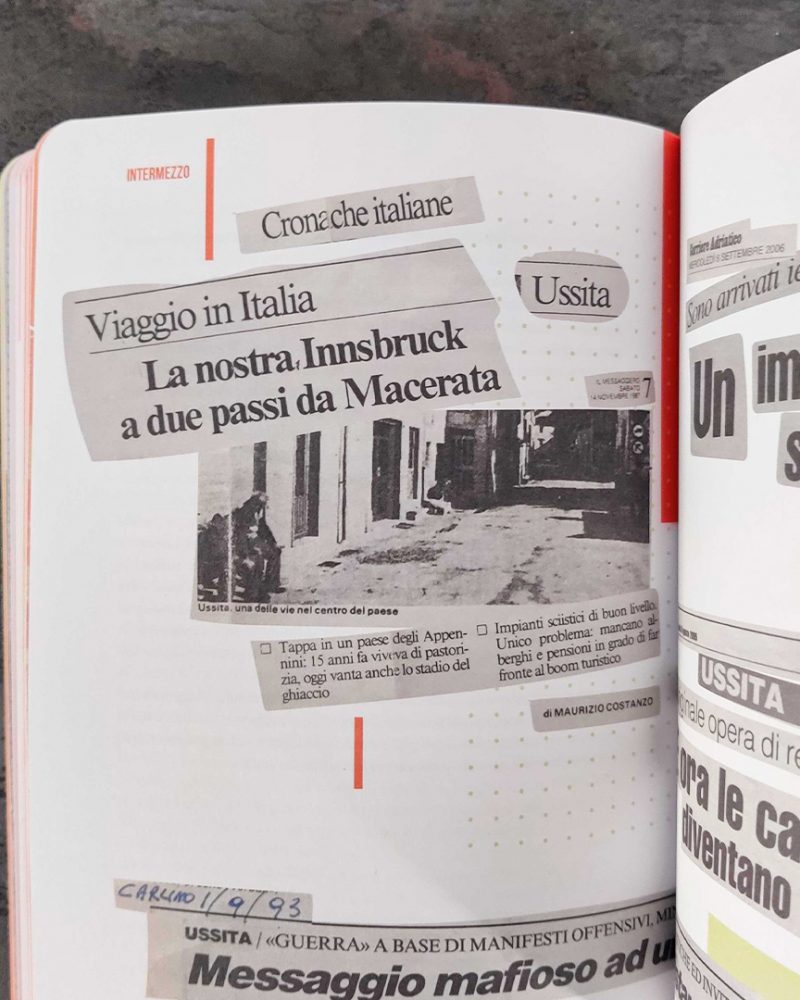


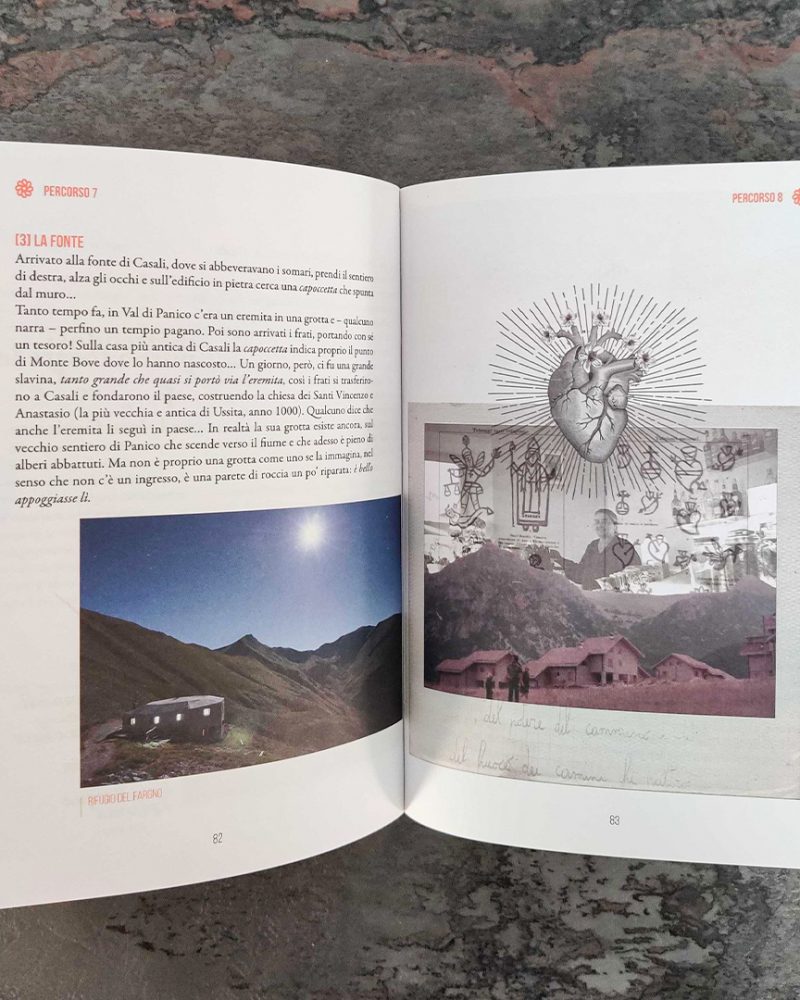

A multi-faceted journey to discover Ussita, the small village in the Sibillini Mountains that was devastated by the 2016 earthquake. A mobile guidebook, as mobile as the land it tells the story of: from the earth’s trembling during the earthquake to a community in motion, guiding the traveler on a journey of self-discovery through a ‘seismic’ narrative, where texts and images simultaneously speak of the old, the new, and the imaginary.
Vivere Qui, or Living Here, brings together the stories of the inhabitants along 8 routes, immersing the traveler in the life of the Ussita community. It guides them through an urban/naturalistic exploration of the places that characterize the new post-earthquake daily life and the history of the territory.
From the valley to the peaks, a four-part journey ascends from the valley floor to Monte Bove, a symbol of the northern Sibillini mountain range. This spiritual experience, narrated by the writer Alessandro Chiappanuvoli, invites the traveler’s imagination to bring the story to life. The routes intersect at various points of interest, giving the traveler the freedom to rewrite their own path.
The Ussita guide was created by Sineglossa, in collaboration with C.A.S.A. – Cosa Accade Se Abitiamo, as part of the ‘Once App On A Time’ project, funded by the Department of Youth and the National Civil Service.
Bologna Nontourism Guide
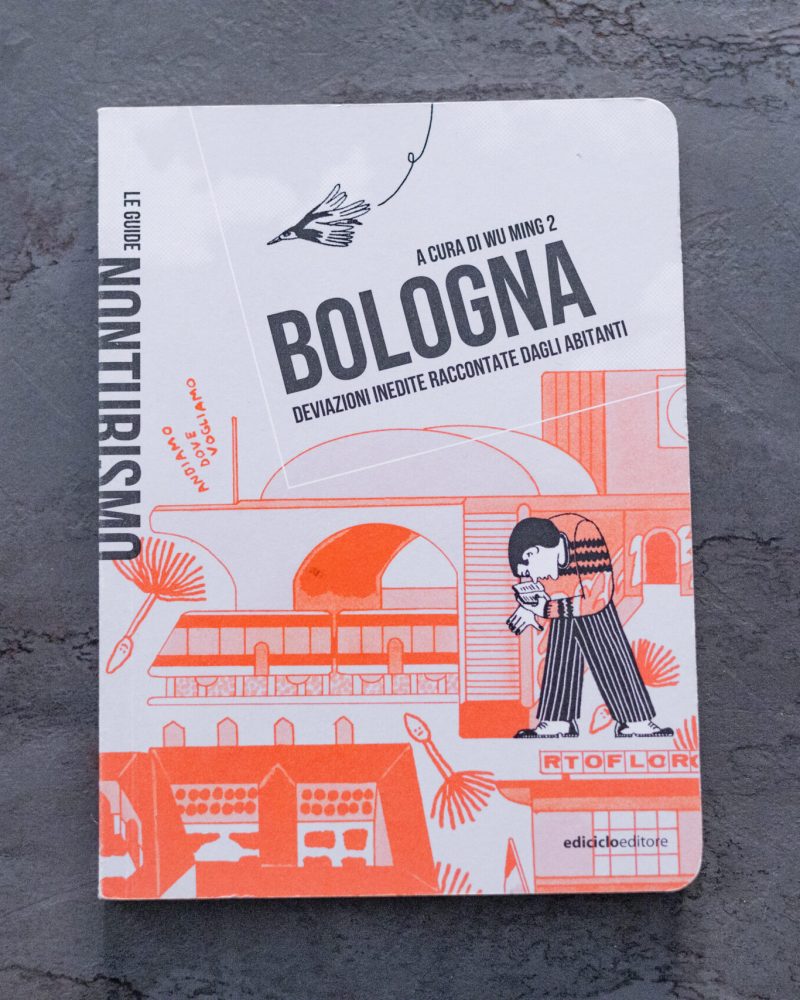
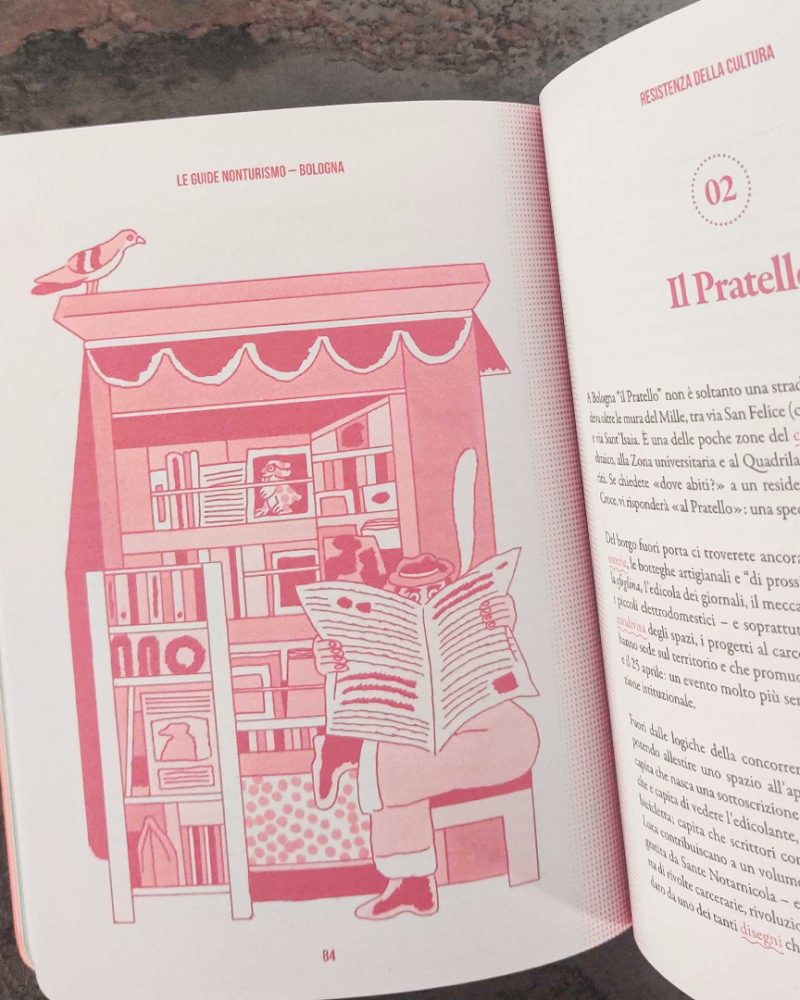
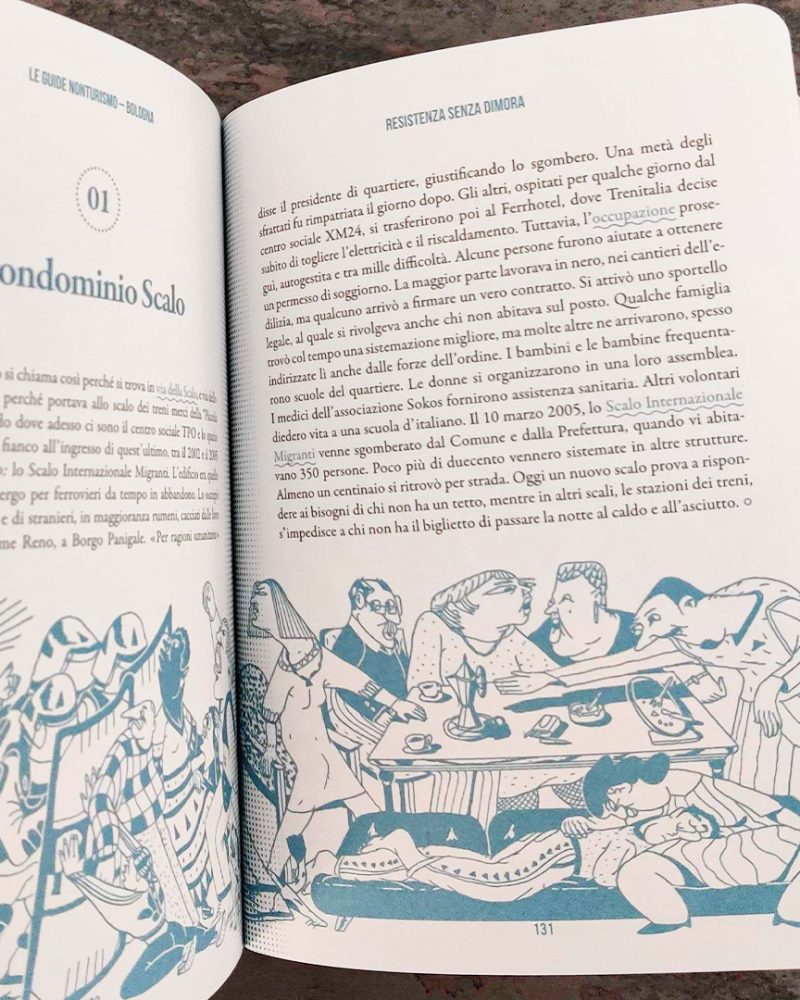
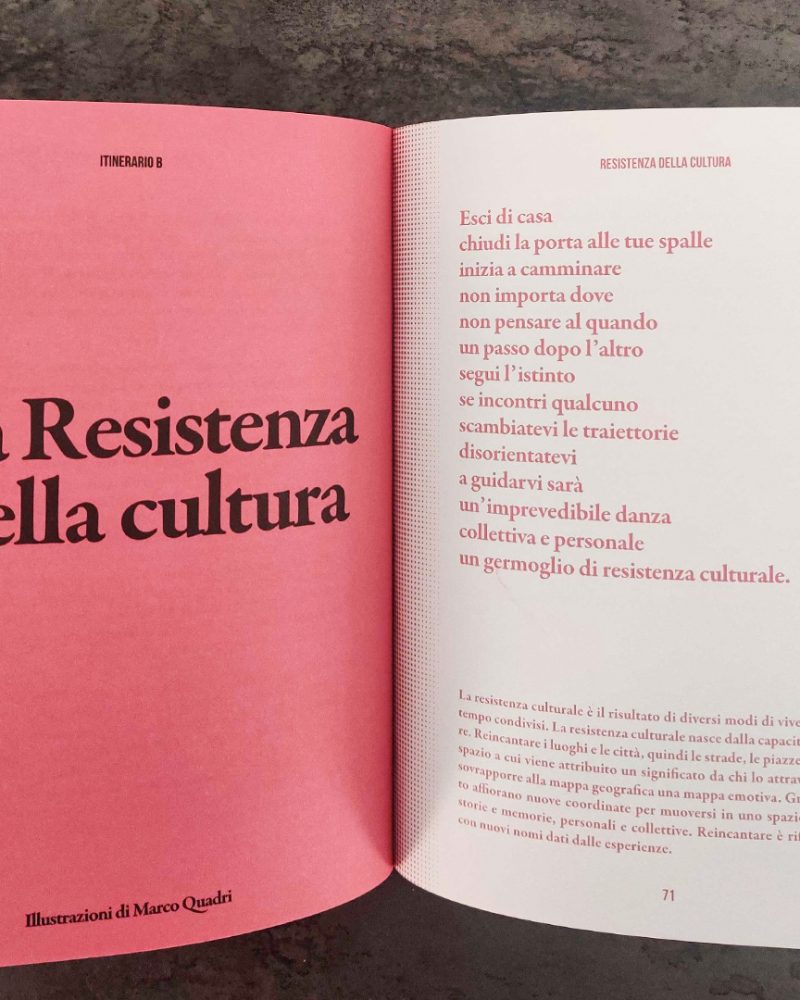
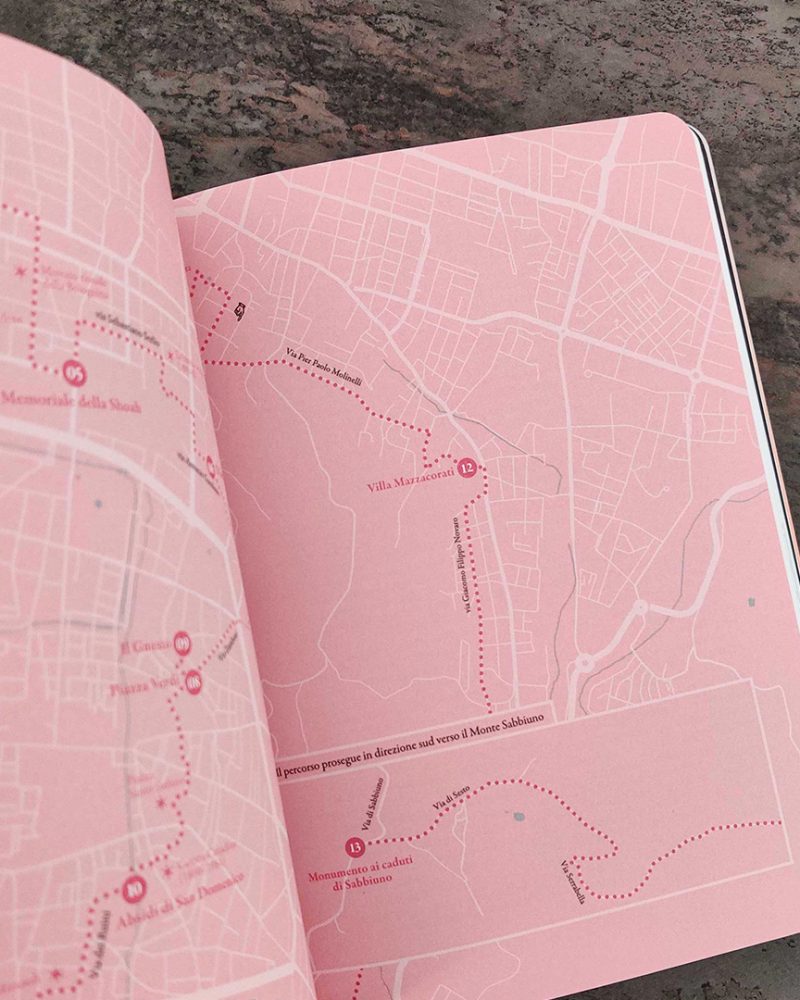

“There are places in Bologna that still resist the aesthetics of tourism: they are not photogenic, they are not decorous, they do not display the Unesco stamp and they do not sell tortellini at 35 euros a kilo. Yet precisely because they resist, they best express the city’s genius loci, its rebellious attitude. Places where unexpected plants grow, where culture changes the use of spaces, where homeless can also live, where the night belongs to everyone. This guide collects them in four paths thanks to the work of three “community editorials team,” meaning people who live Bologna and do not resign themselves to contemplating Bologna as it turns into its postcard” (Wu Ming 2)
The topic around which the three community editorial offices were activated for the Bologna guidebook is resistance, a word strongly linked to Bologna’s historical and social identity, which the editorial teams have reinterpreted according to their own sensibilities, producing three itineraries:
- the resistance of biodiversity in suburban paths;
- the resistance of the homeless housing;
- the resistance of small cultural centers.
The guide closes with an extra itinerary, Cities by Night, a map and podcast by artist Valentina Medda on women’s perception of Bologna by night.
The Bologna guide is produced by Sineglossa in collaboration with Piazza Grande, Kilowatt, Yoda, ITACA, Tatanka, with the support of Comune di Bologna, Lo Stato Dei Luoghi, Orchestra Senza Spine. The project is funded by the General Directorate for Contemporary Creativity of the Ministry of Culture with Bando Creative Living Lab III edition, with the contribute of Fondazione del Monte..
Ancona Nontourism Guide
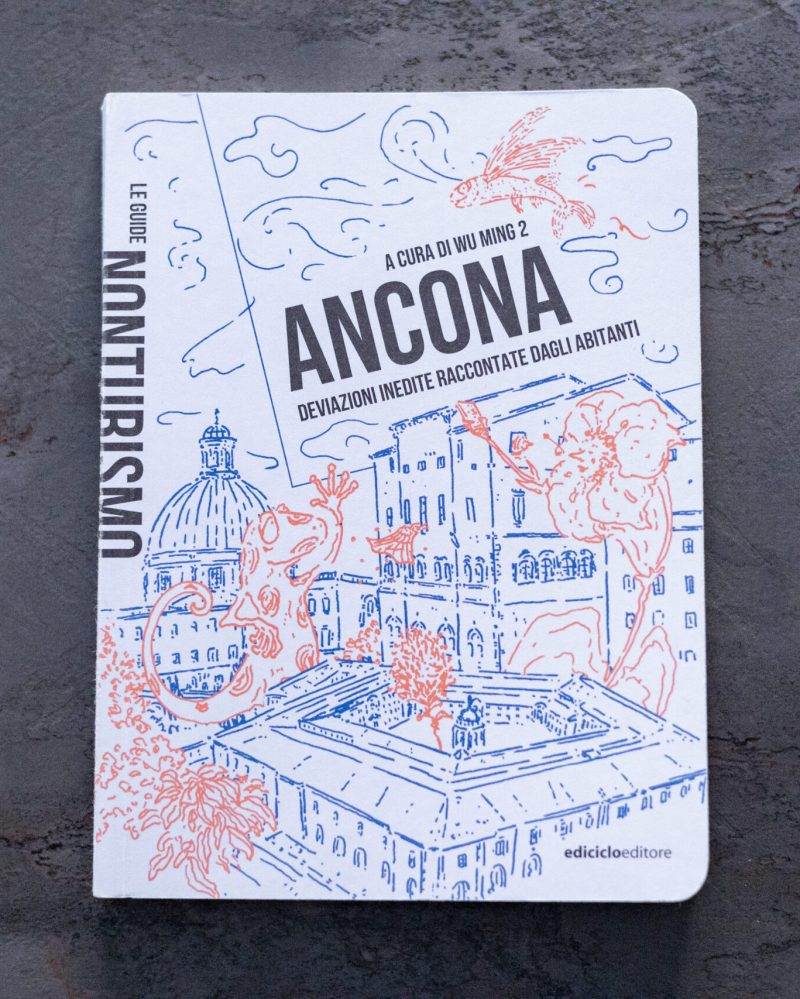

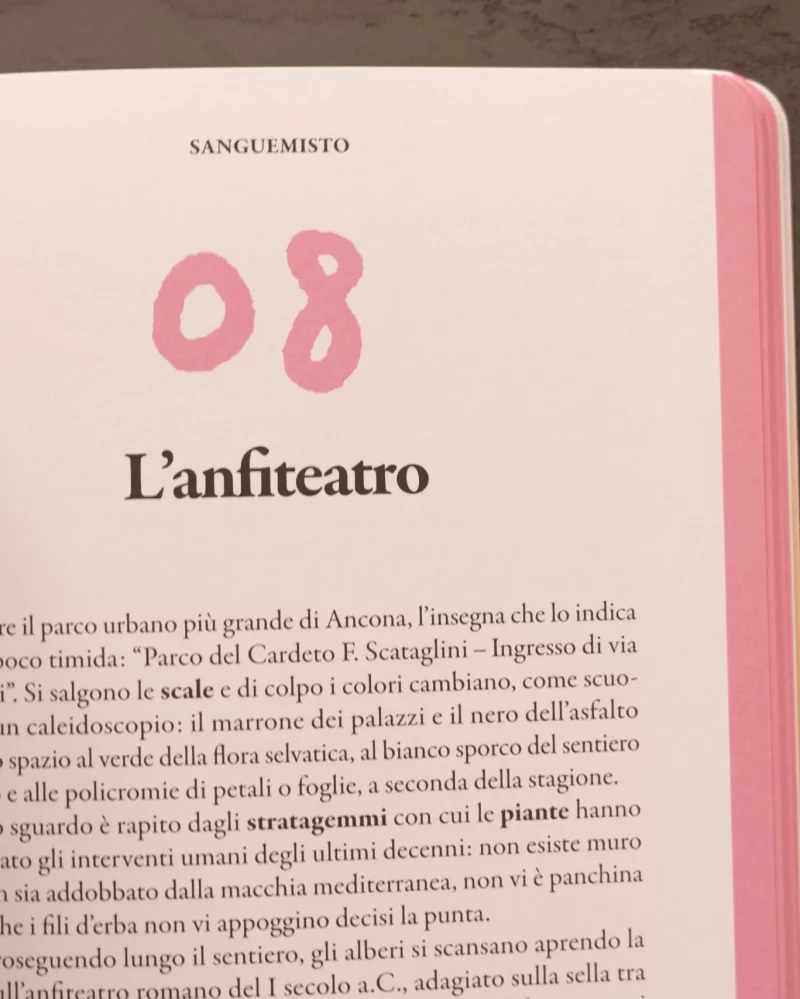
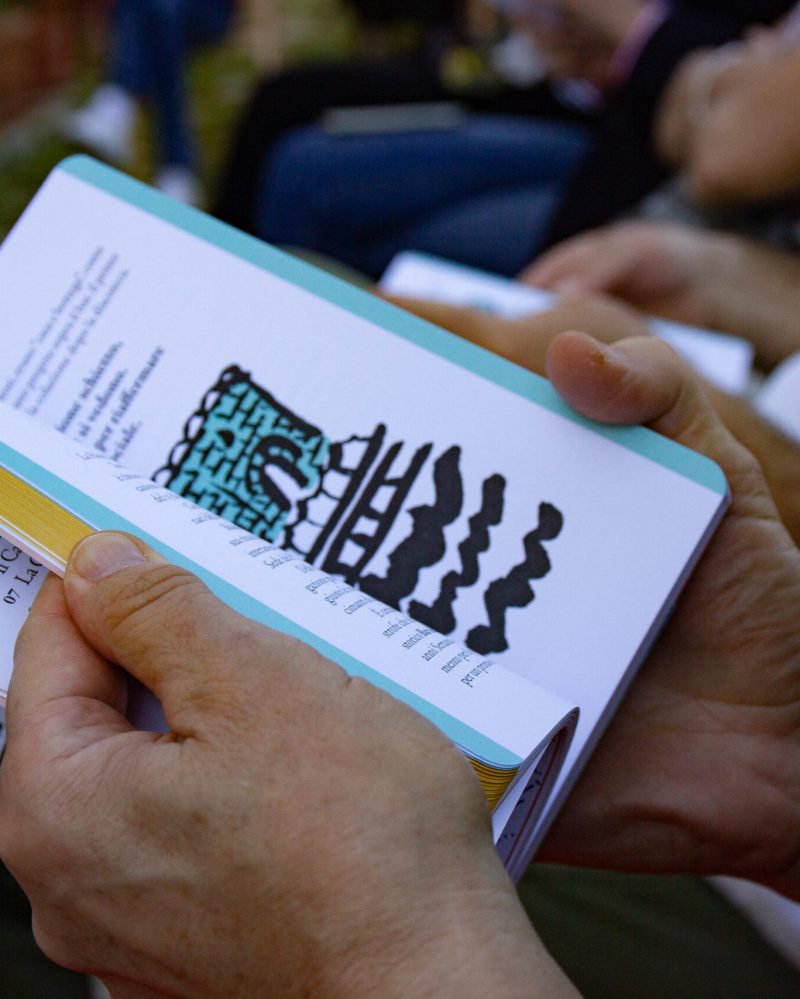
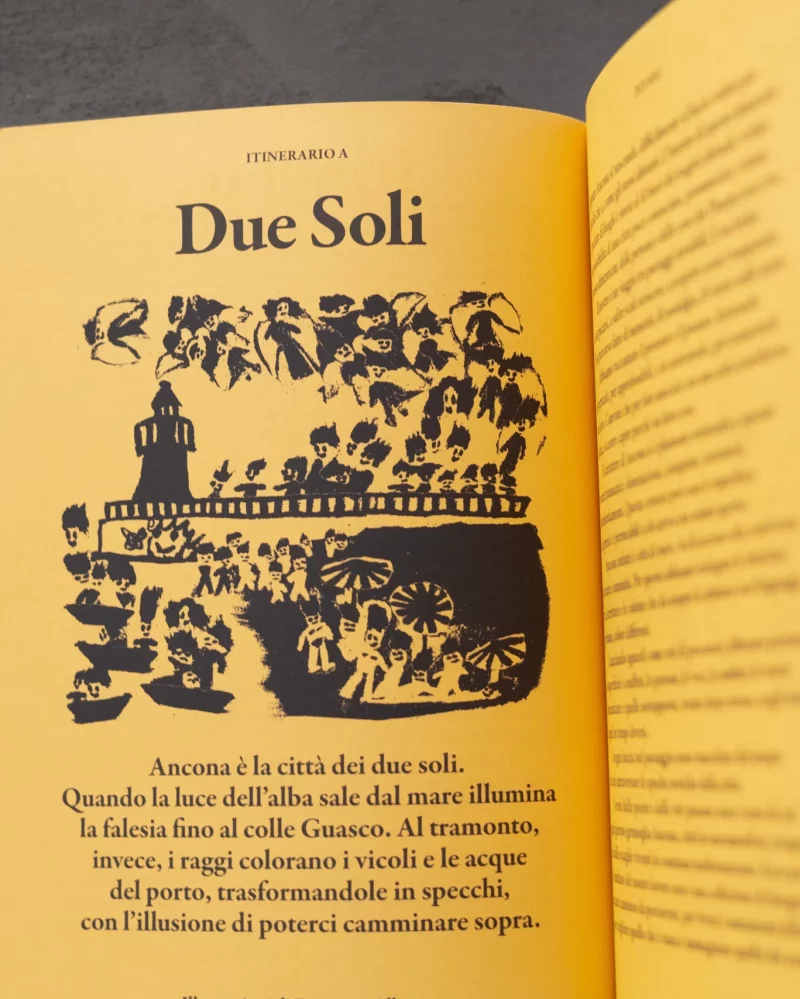
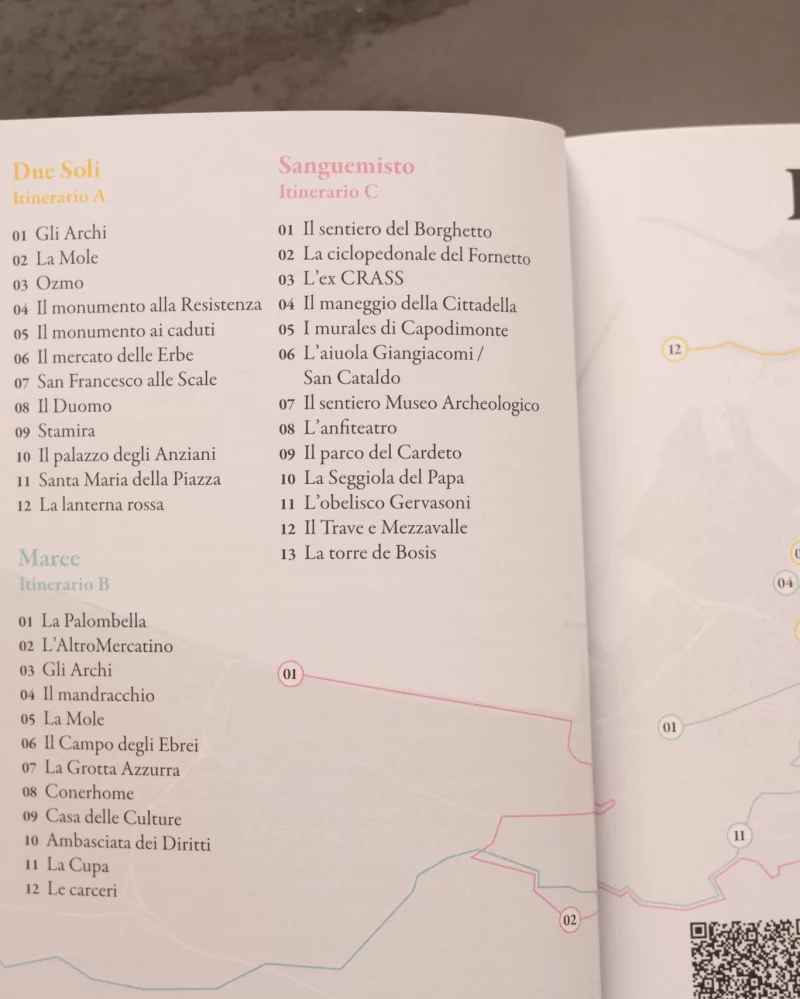
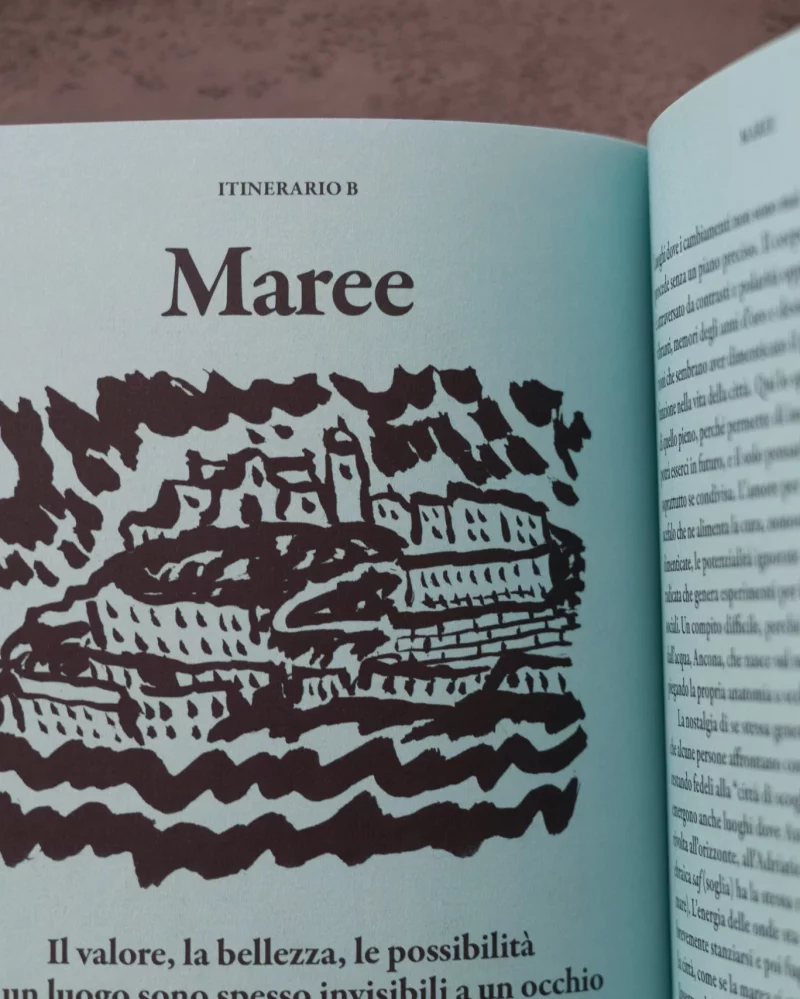
For Ancona’s Nonturismo guide, between March and July 2023, Ancona inhabitants were involved in a participatory process to tell the story of their city to those who feel like nontourists. Three community editorial boards led by trainer Tommaso Sorichetti, bookseller Simona Rossi and Museo Tattile Statale Omero coordinator Annalisa Trasatti, with Wu Ming 2 curating, narrated some of Ancona’s places according to a “spirit of place” chosen during a collective co-design workshop.
The Nontourism guide of Ancona is produced by Sineglossa as part of Sistema, an initiative desired by the Municipality of Ancona for the ecosystemic enhancement of the city and the entire Conero nature area, in collaboration with Parco del Conero, CNR-IRBIM, CSV Marche Ets, Polo9, Casa delle Culture – il Pungitopo, Hort, Scholanova di Varano, realized with the support of Fondazione Cariverona. Graphic design by Tatanka, illustrations by Francesca Albergo, Francesca Arena and Chiara di Luca.
Arcevia Nontourism Guide



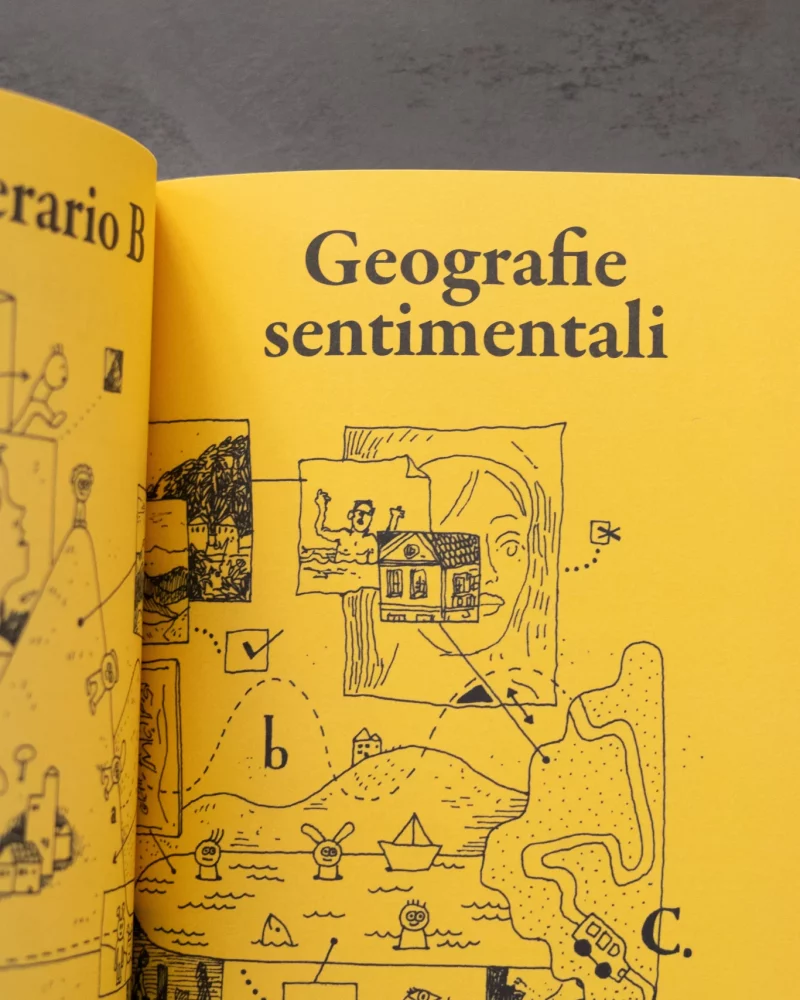

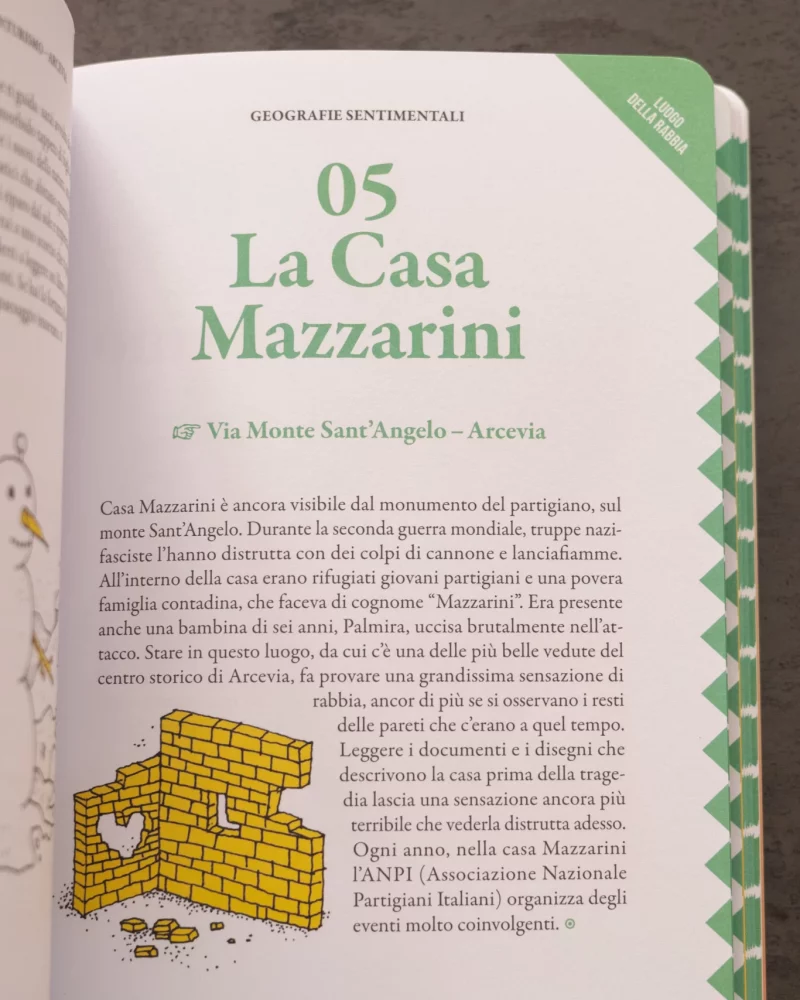
The Nonturismo guide of Arcevia, a town located in the Marche hills, is the result of a collective process of exploring and telling the story of the town that began in September 2023, when more than sixty inhabitants participated in a workshop to create the spirit of the place, drawing Arcevia as if it were a living being.
Between October and November 2023, the project continued in community editorial meetings: writing workshops in which people who live, or lived, between Arcevia and its Castelli met to tell each other what unites them and redefine the meaning of living in this place. With the help of Ciro Saltarelli, Lucio Tribellini, and Angelo Verdini, anthropologists Brenda Benaglia and Eleonora Adorni involved about 30 inhabitants and led the choral narrative of Arcevia as a galactic town. At the same time, a “junior” community editorial team activated by teachers Andrea Bomprezzi and Elena Motisi with 3 classes of the Istituto Comprensivo Statale di Arcevia conducted a similar work of choral narration of the territory, following the Nonturismo for Kids methodology on emotional geography developed by Sineglossa.
The guide is completed by an itinerary on the real and the fantastic stories of places, written by Wu Ming 2, and a visual narration with illustrations by Edoardo Massa.
The Arcevia Nontourism Guide is curated by Sineglossa, in collaboration with the Municipality of Arcevia, Clio ’92 – Association of Teachers and Researchers on the Didactics of History, Parco Museo Minerario delle Miniere di Zolfo delle Marche e dell’Emilia Romagna, Istituto Comprensivo Statale di Arcevia, Associazione Turistica Pro Loco Arcevia, Unione dei Comuni – Le Terre della Marca Senone, Unione Montana dell’Esino Frasassi. The project was realized thanks to the support of the Cariverona Foundation through the Nuovo Sviluppo grant. The graphic design of the guide is by Tatanka and the illustrations are by Edoardo Massa.
Val di Fiastra Nontourism Guide
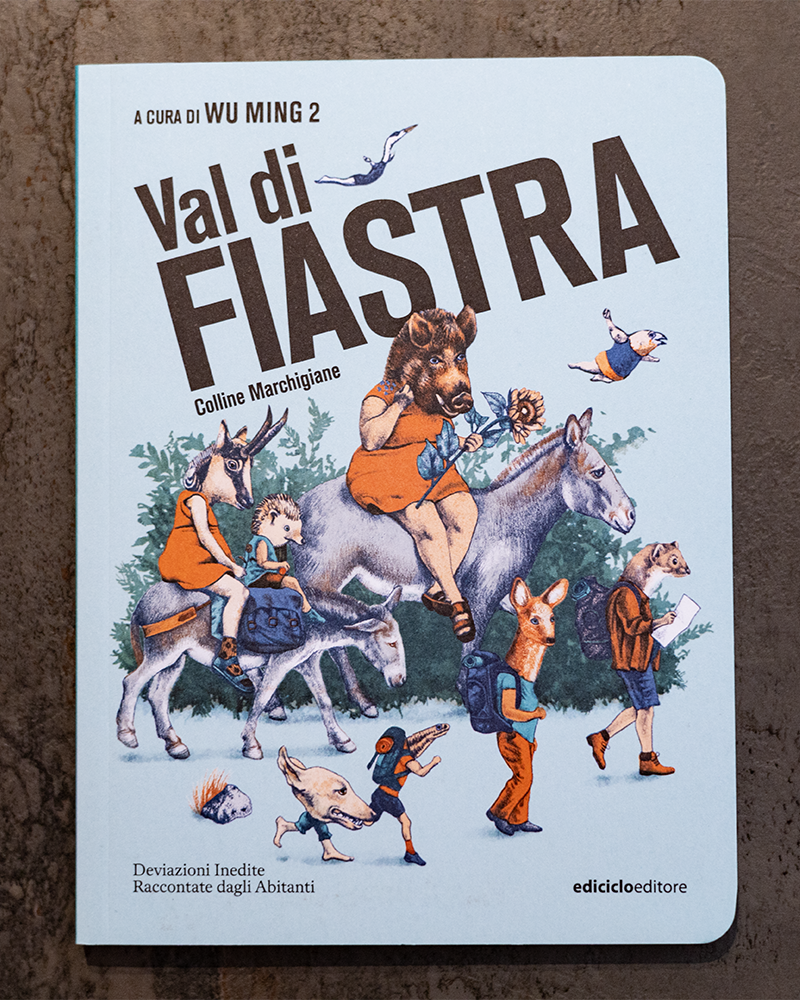
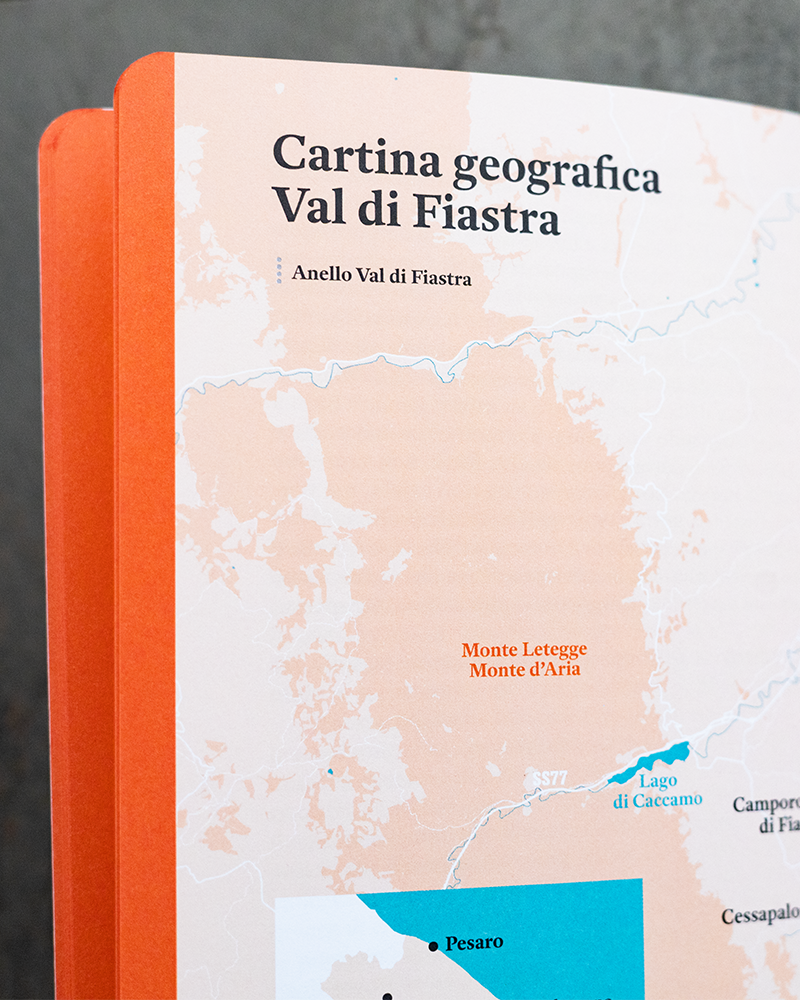
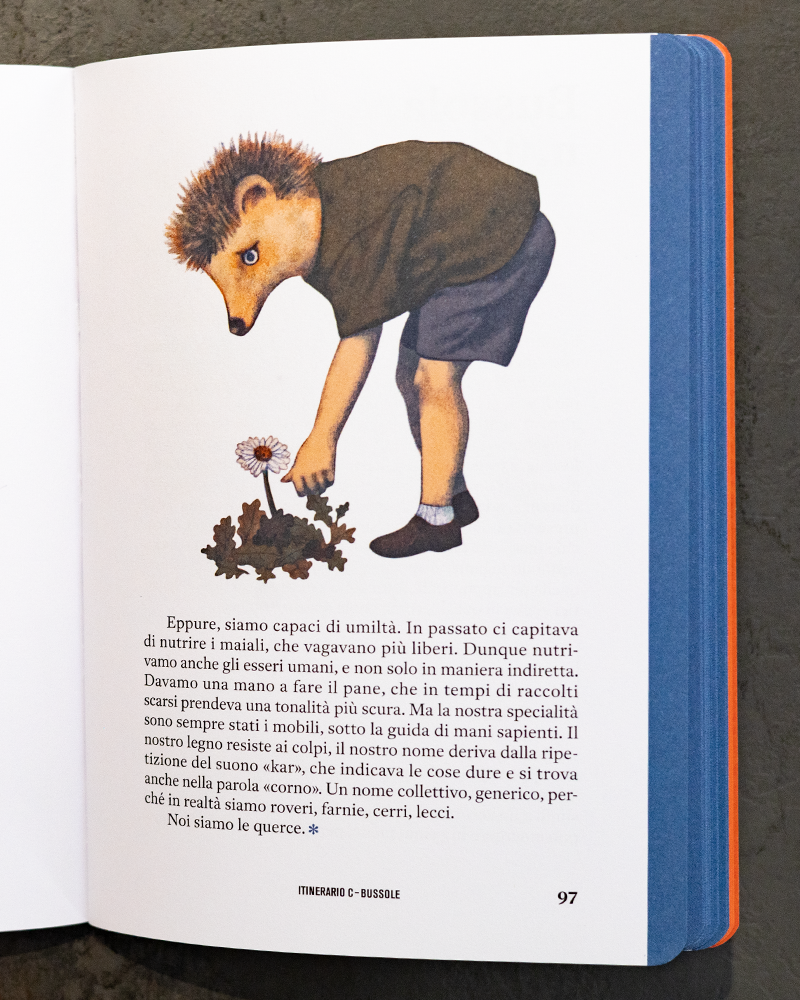
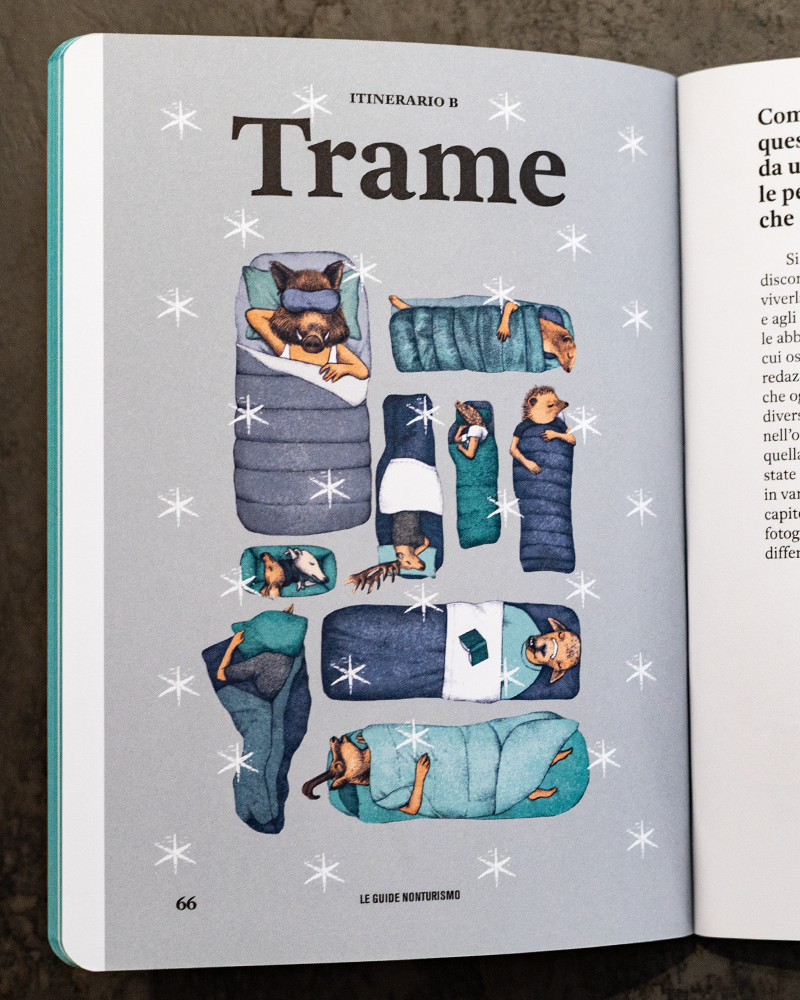
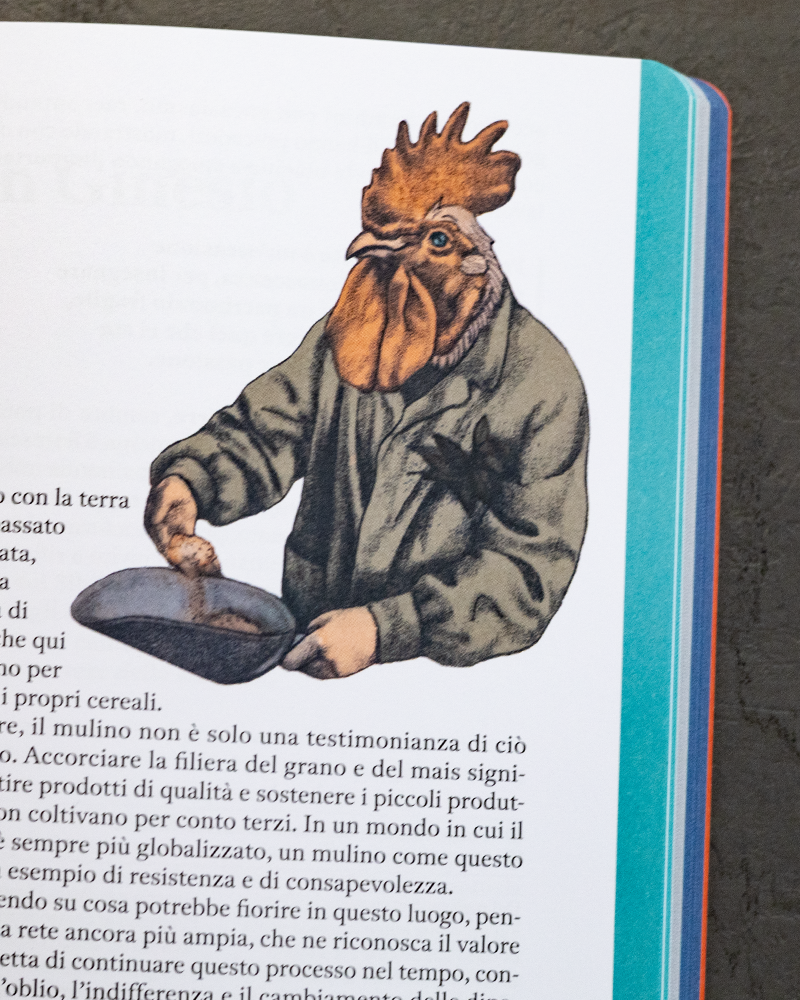
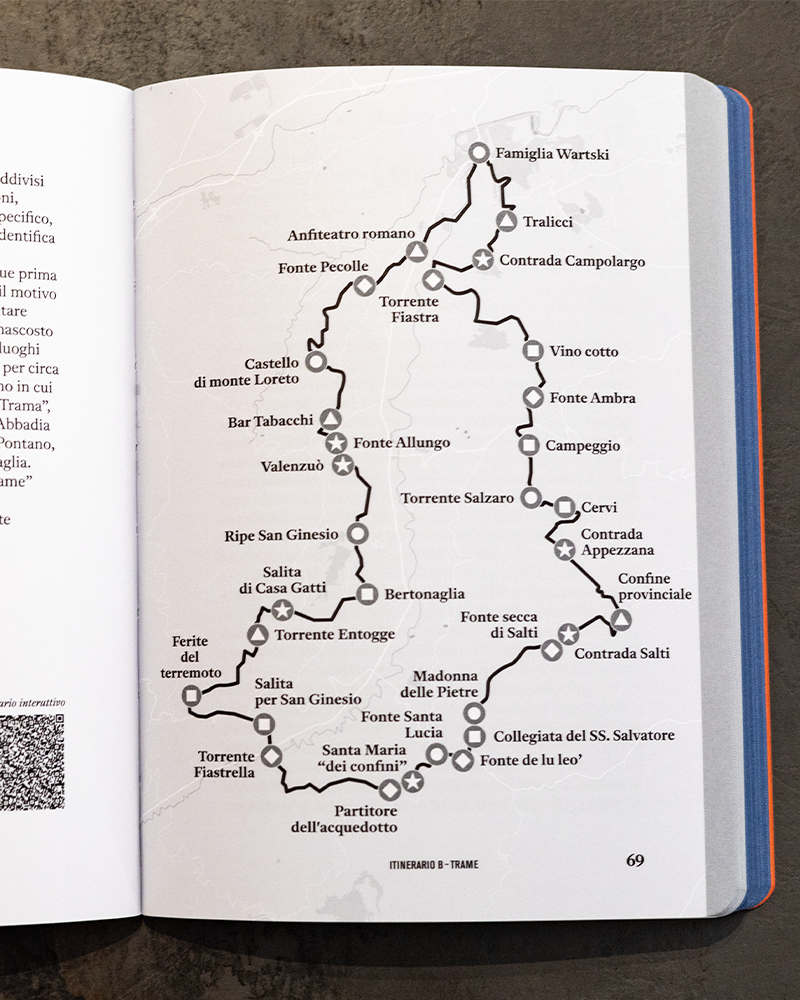
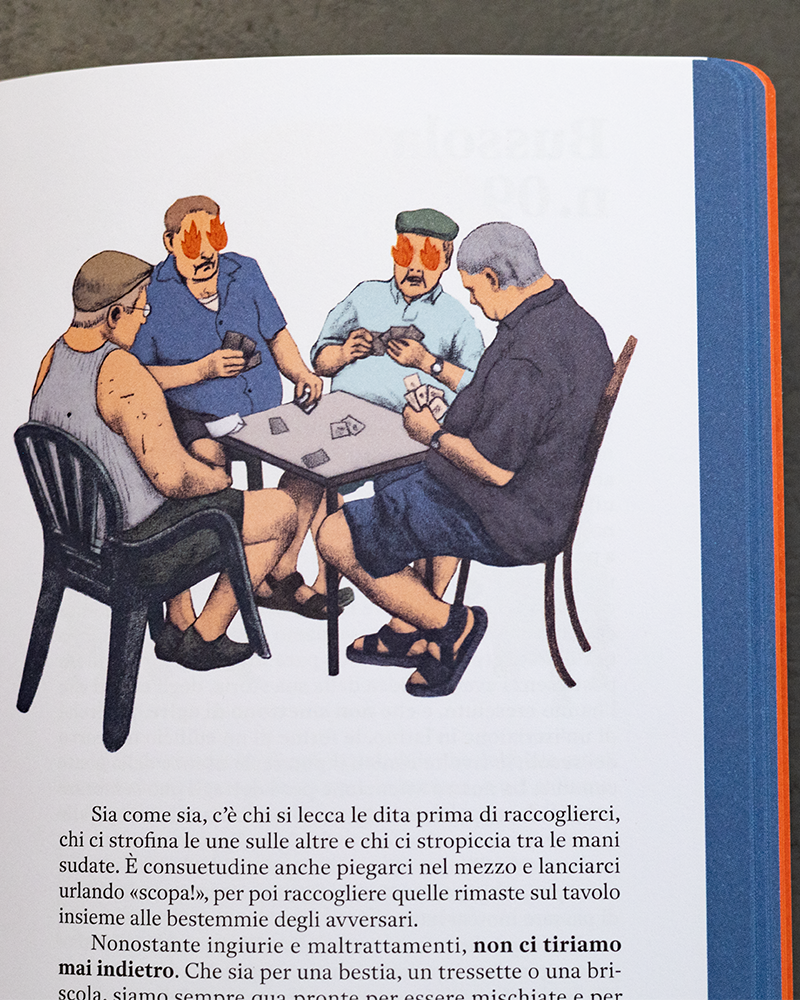
The Val di Fiastra Nontourism Guide (2025) is the result of the first experimentation of an itinerant editorial team, made of locals and non-locals who have traveled the Fiastra Valley Ring with the aim of observing and narrating the area according to three filters: nontourist places, recurring themes (the hidden, water, contrasts, relationships, emotional states), and characterizing icons (crosses, farmhouses, oaks).
The Val di Fiastra Ring is a nature and cultural itinerary at the base of the Monti Azzurri, in the Marche Region. It walks through Abbadia di Fiastra, Loro Piceno, Sant’Angelo in Pontano, San Ginesio, Ripe San Ginesio, Colmurano, and Urbisaglia, to allow tourists have experience of its country trails, forests, abbeys and villages.
The Nonturismo guide to the Fiastra Valley is curated by Sineglossa and produced with Anello Val di Fiastra, Inabita and borgofuturo as an action of QuiValdiFiastra, the cultural and social regeneration project that won the Pnrr Borghi public grant and is promoted by the municipalities of Ripe San Ginesio, Loro Piceno and Colmurano, in the province of Macerata. The graphic design of the guide is by Tatanka and the illustrations are by Claudia Palmarucci.
Appennino Tosco-Emiliano Nontourism Guide
The Nonturismo guidebook of the Tuscan-Emilian Apennines will be published in 2025 and produced in collaboration with the Unione dei Comuni dell’Appennino Bolognese, Il Poggiolo Rifugio Re_Esistente, and Officina 15, to tell what it means to live today in a rural and mountainous area such as the Bolognese mountains. Through a process of mapping the “community antennas” of the area, and with the creation of community editorial boards, some significant aspects of life in the Apennines will be explored, with a focus on the sense of community, the identity of the area, the sustainability of living in the mountains, and the relationship with the city of Bologna.
The Nonturismo Appennino Bolognese guide is edited by Sineglossa in collaboration with Unione dei Comuni dell’Appennino Bolognese, with support from EIT Climate-KIC. EIT Climate-KIC is supported by the European Institute of Innovation and Technology (EIT), a body of the European Union.
